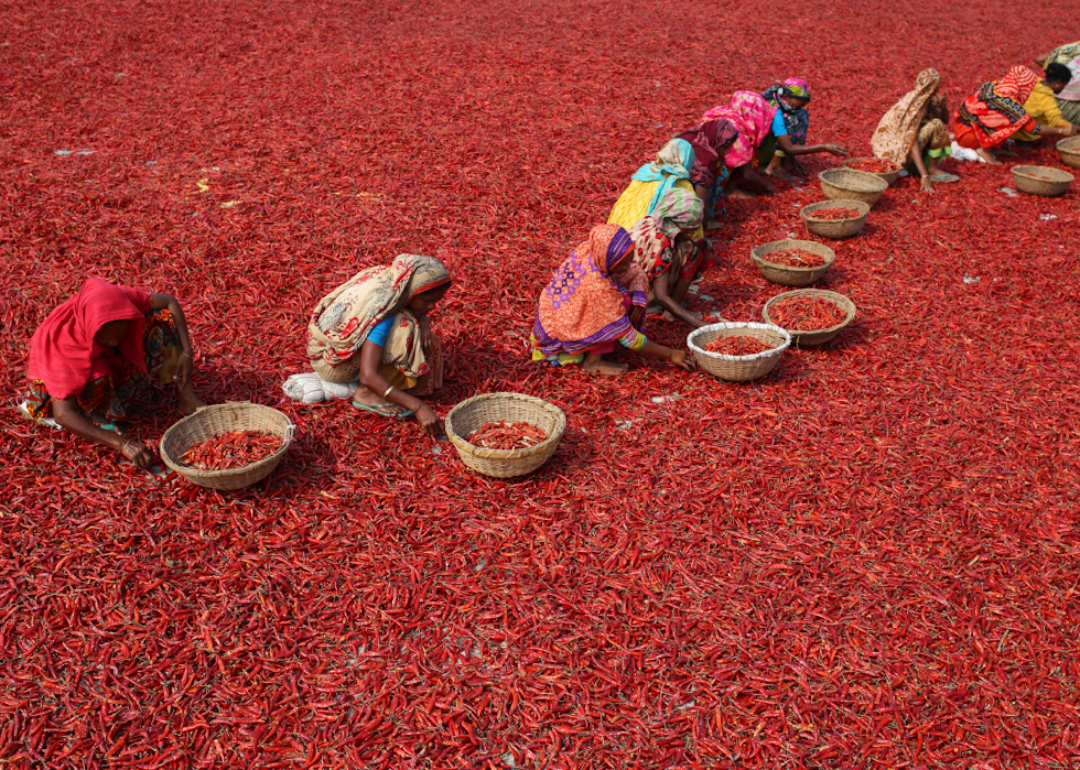
Stunning images of farming around the world
Stunning images of farming around the world
Thriving off the land has never looked so good. Some of the most agriculture-rich regions seen here are so picturesque that they appear to be works of art in their own right. These stunning global farming pictures reveal how the earth and sea feed humankind. From harvesting rice in Thailand to growing barley in Northern Ireland, the images that follow offer an up-close and personal look at how cultures from all over harvest their region's natural products.
And while some areas of agriculture are not edible, that doesn't mean they're not profitable. Bangladesh's water lilies and Indian rubber sell high, offering a livelihood for locals who harvest them. And rather than growing exotic-tasting mushrooms or producing high-priced pearls, a Nepalese hamlet at the base of Mount Everest brings in money from mountaineering, thanks to villagers welcoming climbers from all over the world into their homes, providing food, lodging, and instruction on how to conquer one of the world's most famous peaks.
To capture the most stunning farming images worldwide, Stacker poured through Getty Images, the renowned British-American visual media source, along with a few other photo sources, and selected a compilation of pictures that speak a thousand words. With each slide, much less than a thousand words are used to add context to the breathtaking images, including what's happening in the photo and any relevant information on that sector's impact on the region. The art of producing, harvesting, and even packaging agriculture products, including tea, tulips, chili peppers, cheese, salt, mussels, and more, are seen in each picture slide, along with location, date, and farm product.
Continue reading—or just looking—to see stunning images of farming around the world.
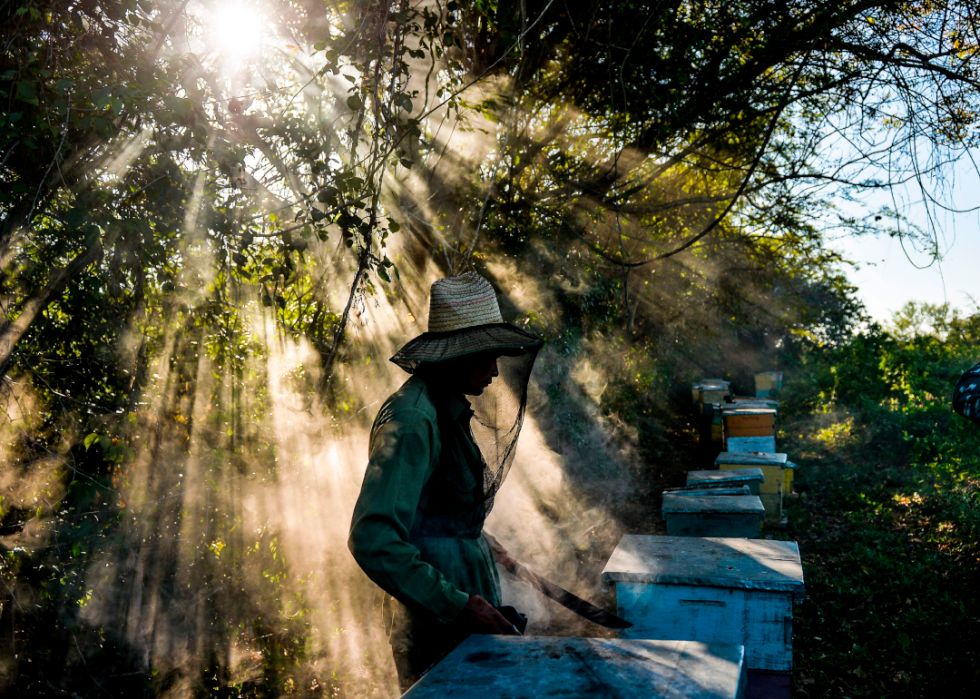
Apiary in Navajas, Cuba
Free from toxic chemicals, bees in the Cuban province of Matanzas produce some of the world's cleanest honey. Here, a beekeeper is shown working in a Navajas apiary to provide high-quality honey coveted by the European market. The region has remained safe while other bee populations worldwide thin out due to disease and pesticides.
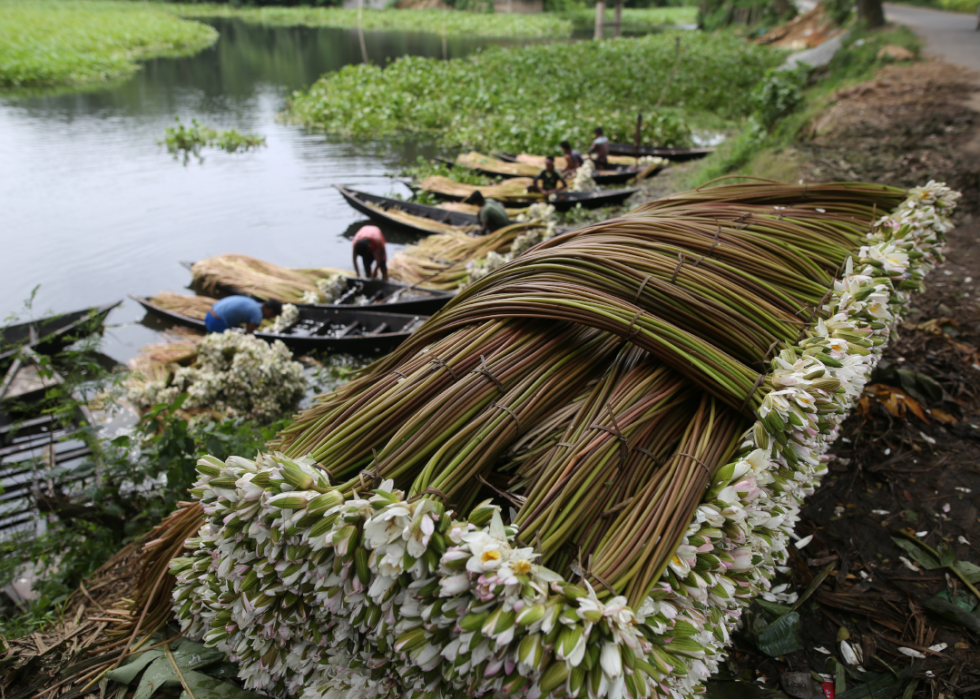
Water lilies in Dhaka, Bangladesh
The country's national flower is a tropical freshwater plant and an excellent sell in the Dhaka markets in Bangladesh. Originating from the Nymphaeaceae family with the local name Shapla, the foreign flower is rooted underneath the water by long thick stalks, with some blooming only in the morning or evening depending on the type of insect pollinators.
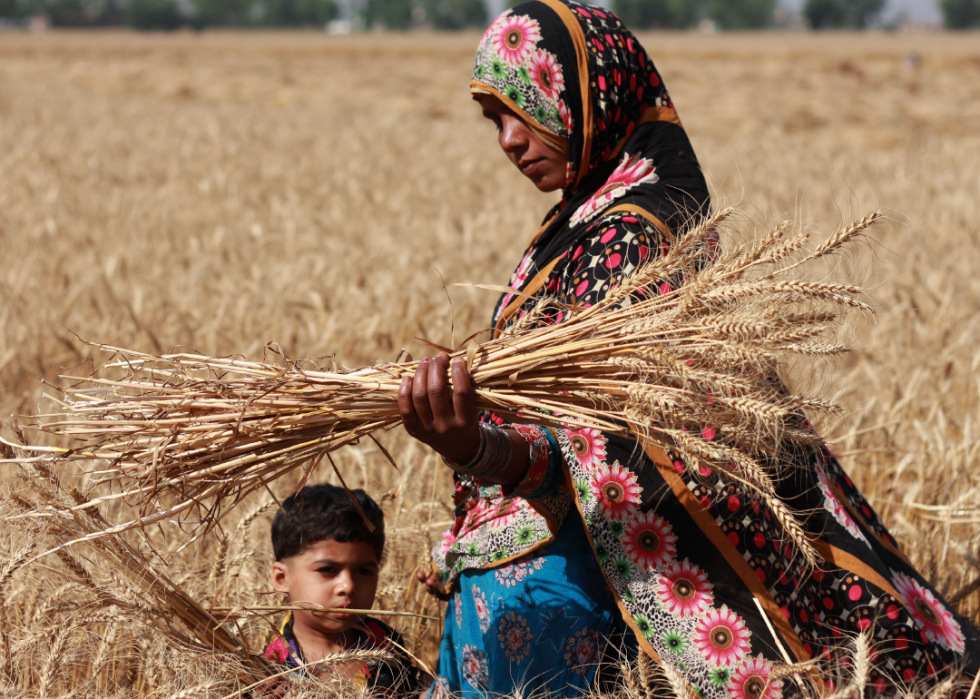
Wheat harvest in Lahore, Pakistan
While Pakistani farmers—like the ones seen here—find themselves with some of the wealthiest wheat fields, the government's procurement and surplus of grain creates financial controversy for the country's most profitable farming product. Too much grain from cereal grass causes a "wheat sector circular debt," saddling the government and provinces with additional debt due to the combined sales from the public and private sectors.
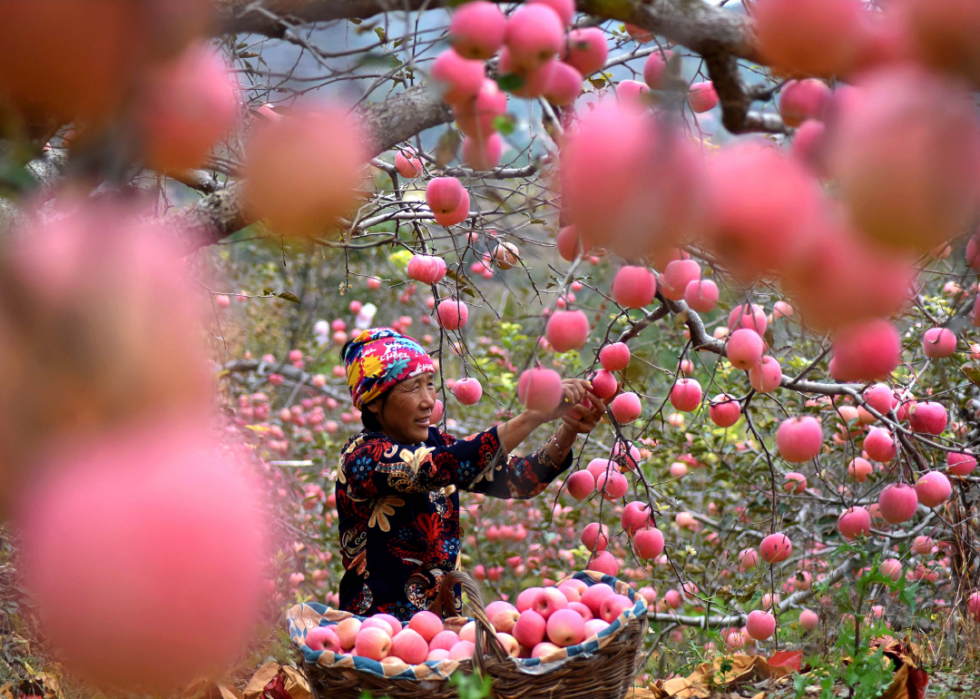
Apple orchard in Shandong, China
The high altitude and mild climate in China's Shandong province produces the Yantai apple, its most profitable farm product. In Yantai City, known as "the land of fruits," up to 90% of villages breed these bright-skinned apples famous for their sweetness and a high curative and nutritional value.
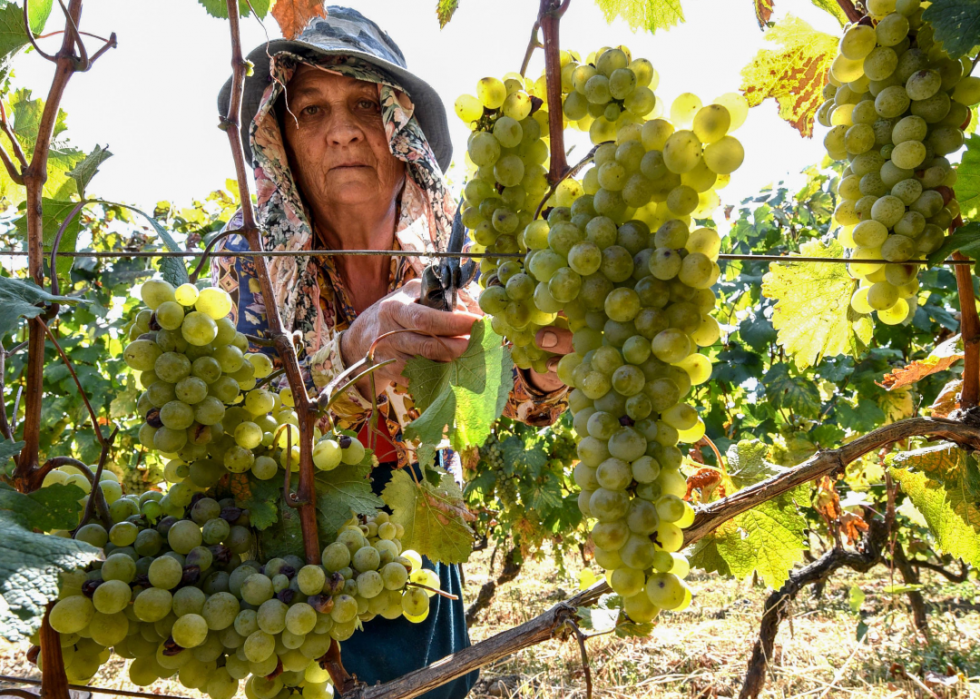
Vineyard in Kakheti, Georgia
The 4,250 square miles of vineyards in Kakheti, Georgia, produce the world's oldest wine, which can trace its history to the Stone Age. Worldwide travelers who flock to the region for its renowned wine tours also enjoy exploring monasteries and human-made cave cities that date back 1,500 years. Georgia's Alaverdi Monastery is considered a wine connoisseur's capital, with up to 104 types of vines for grape lovers to enjoy.
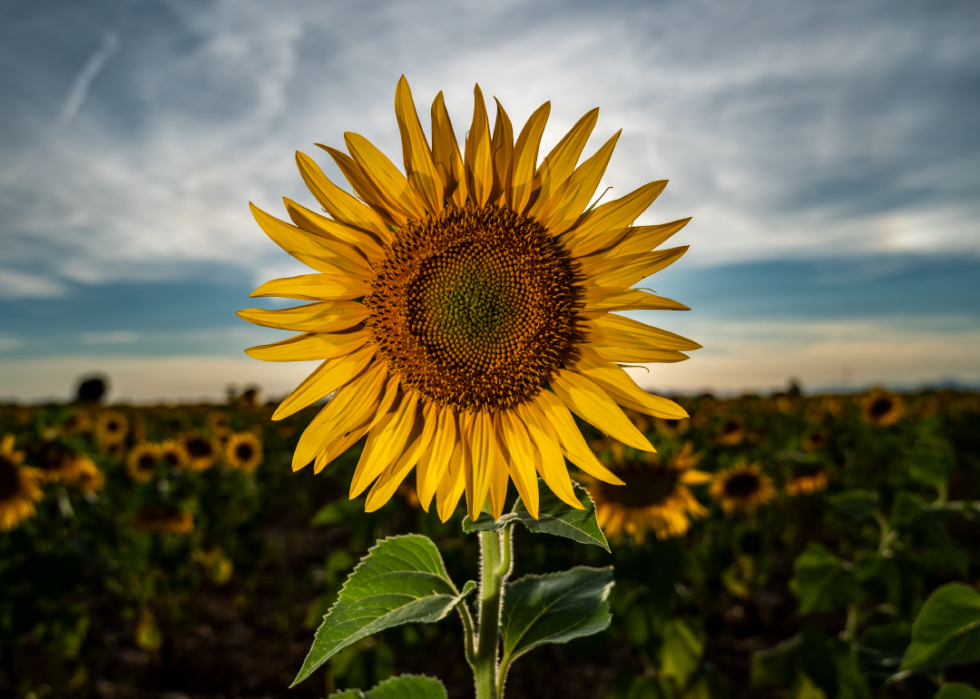
Sunflower farm in Guadalajara, Spain
Tourists trek thousands of miles to walk through Spain's sunflower fields, with TripAdvisor highlighting regions famous for the big, bold, and bright yellow flower. Spanish sunflower fields are particularly popular among the Asian community, especially in Carmona, according to El Pais.
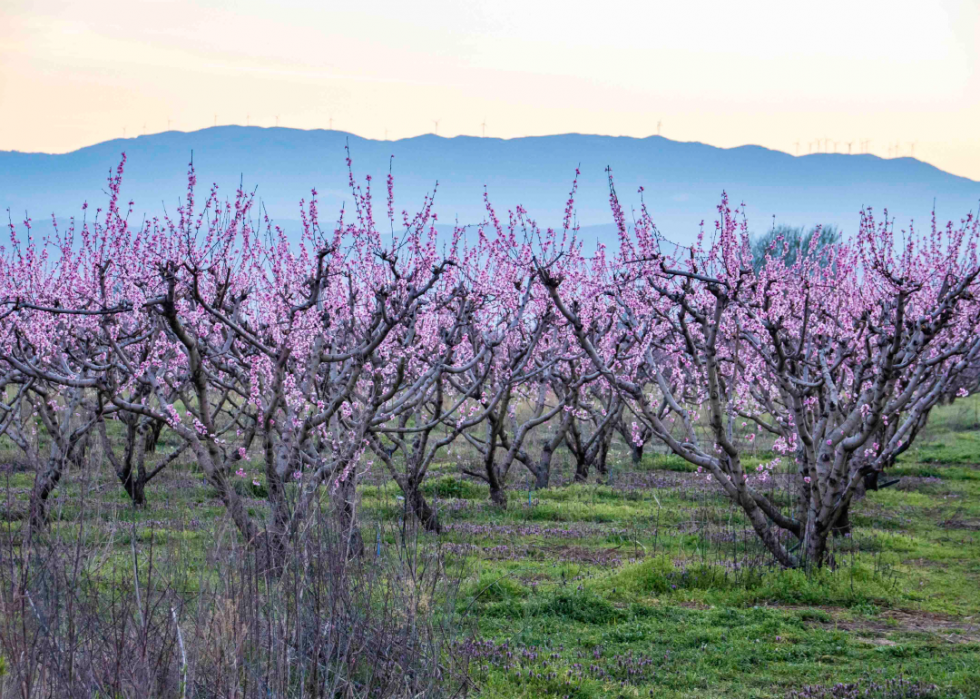
Peach tree orchard in Veria, Greece
Mount Olympus provides a beautiful backdrop to this Greek peach tree orchard's blooming branches in a Central Macedonia plantation. The white, pink, and purple petals complement the juicy fruit in the fields of the Imathia region, which reportedly could be a future tourist site that will allow visitors to see the pulchritude of the peachtree orchard up close and personal.
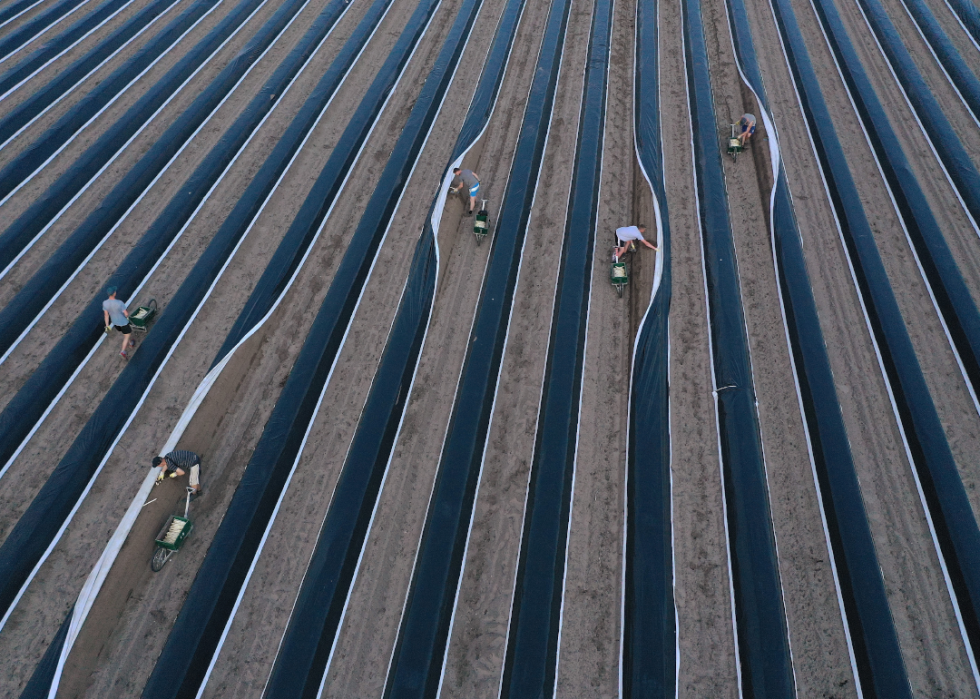
Harvesting asparagus in Beelitz, Germany
The aerial view of this white asparagus field in Beelitz, Germany, shows seasonal laborers harvesting what is considered a German delicacy. The cultural and economic history of the asparagus-producing region of the vegetable, unrooted prior to turning purple, dates back to 1861, when farmer Carl Herrmann spread the initial seed on his field.
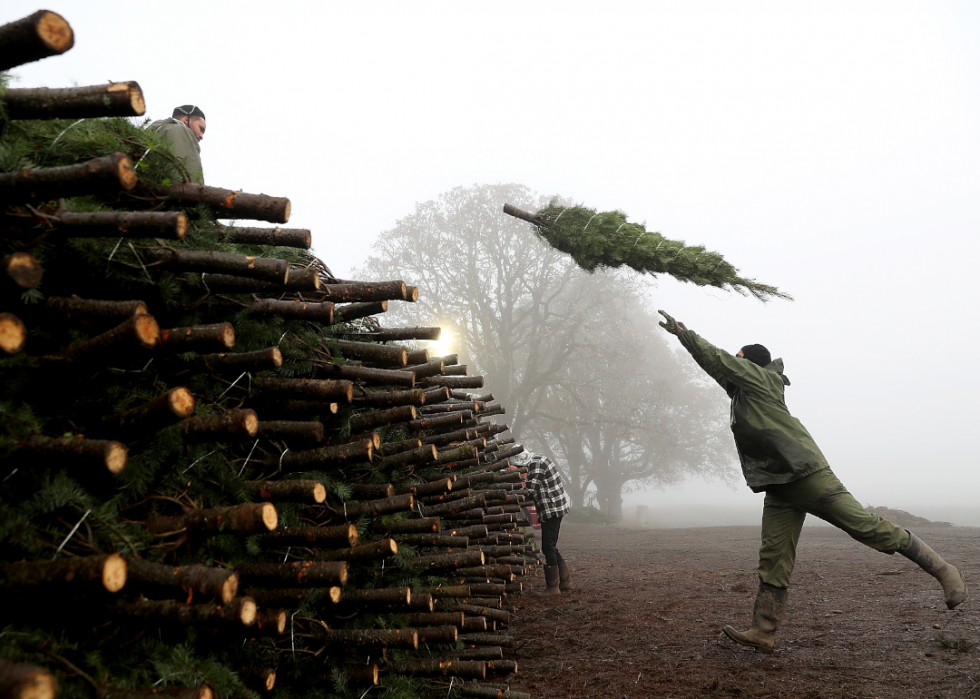
Christmas trees in Philomath, Oregon
Harvesting and shipping approximately 1 million Christmas trees, the Oregon-based Holiday Tree Farm is the largest growing orchard in the U.S., represented by three generations of soil and land management experts. This worker at the Beaver Creek shipping yard hoists a tree on a pile of hundreds that will fill living rooms all across America.
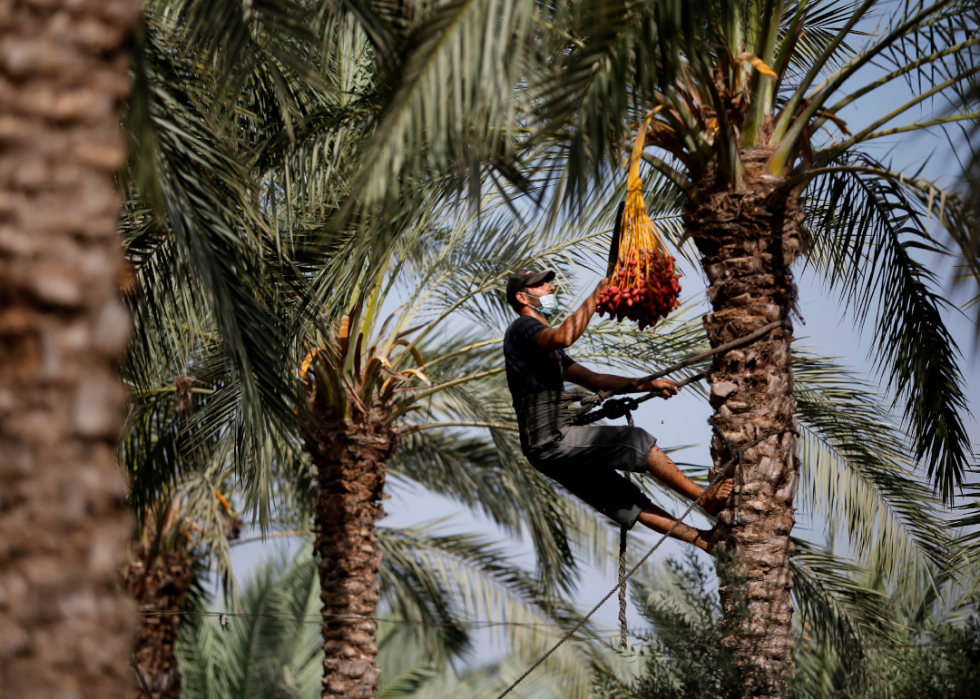
Date harvest, Gaza Strip
Straddling a high tree, a Palestinian farmer picks the fruit from a grove in the region of Deir al-Balah, which translates to "Monastery of the Dates" in English. As the Gaza Strip's smallest refugee camp, Deir El-Balah was a haven for 9,000 evacuees during the 1948 Israel-Arab war. More than 25,000 refugees are currently village residents.
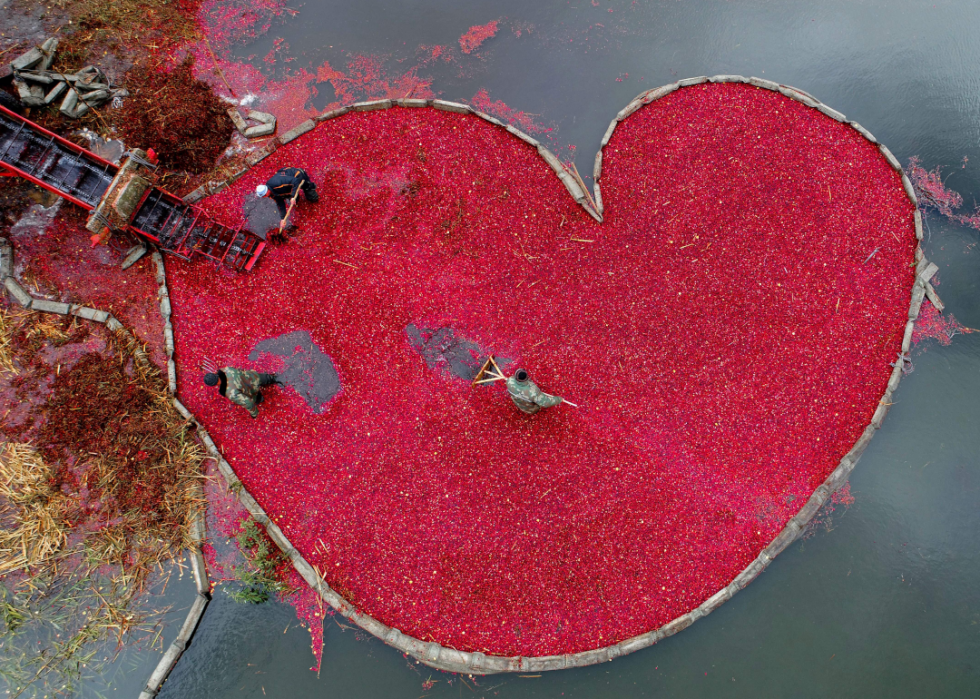
Cranberries in Belarus
Most famous for cranberries and garden blueberries, Belarus berries bloom in the Brest region. A drone captured this picture of Belarusians laborers harvesting cranberries at a farm in the village of Selishche, south of Minsk. The Belarusian farmers copied the U.S.'s agriculture formula for growing a variety of cranberries.
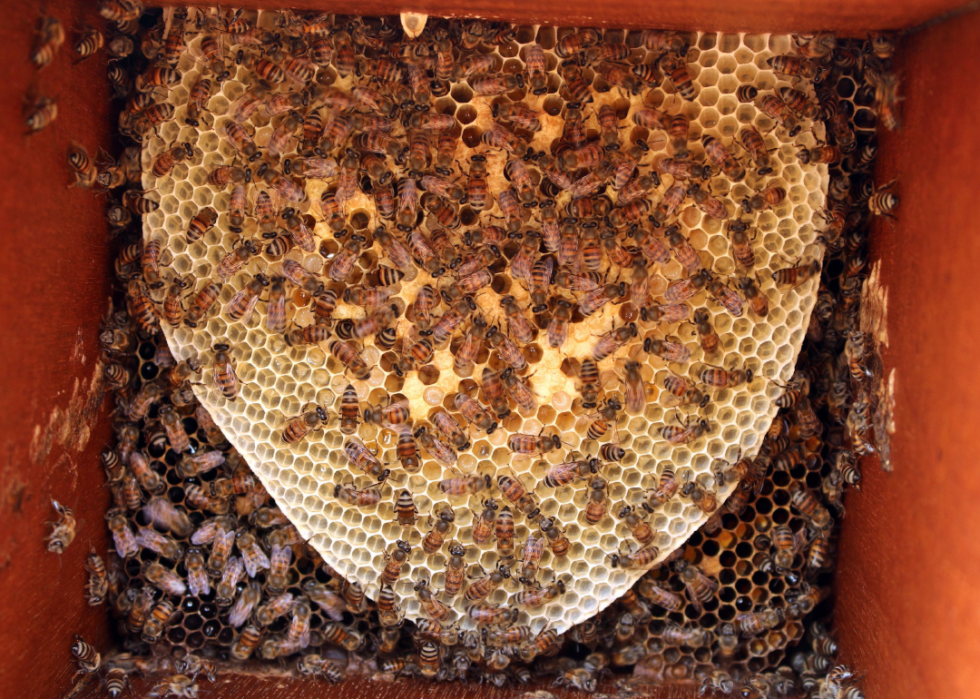
Apiary in Yemen's northern Hajjah province
Collected from the Sidr tree, this honeycomb at an apiary in Yemen's northern Hajjah province shows the natural sweetener in its rawest form. Though the world-renowned honey should bring in sweet domestic and international sales, a conflict between the Saudi-backed government and Iran-aligned rebels has been a detriment to beekeeping and production.
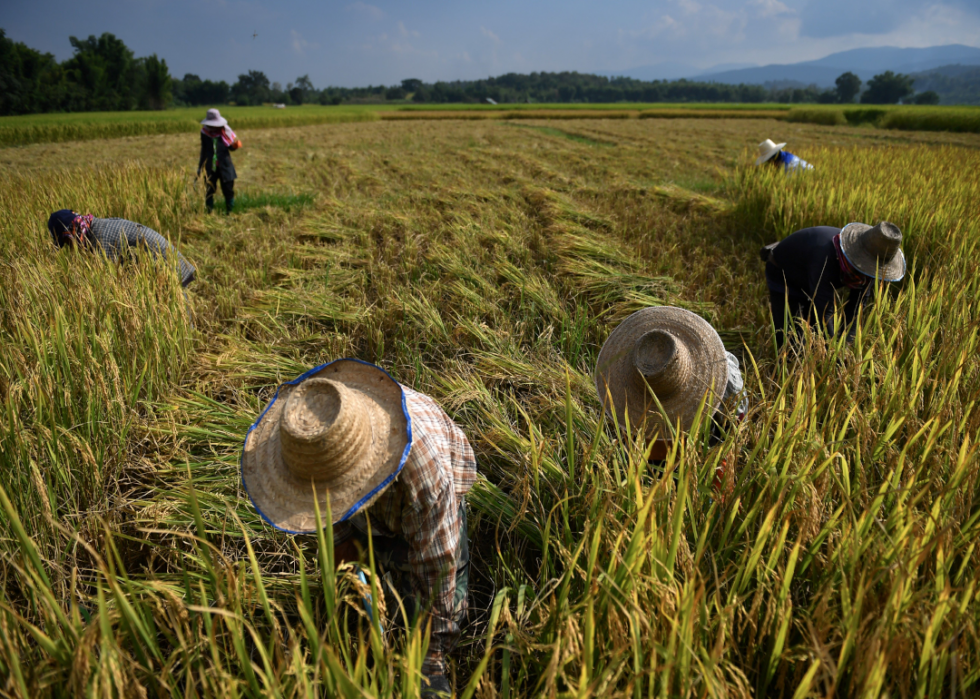
Harvesting rice in Chiang Mai, Thailand
Using eco-friendly harvesting methods, laborers reap rice at the Mae Rim village in Thailand's Chiang Mai province. As one of the top global grain exporters, Chaing Mai must continue to conquer drought and product damage due to pesticides in order to keep their crops clean and ready for worldwide shipment.
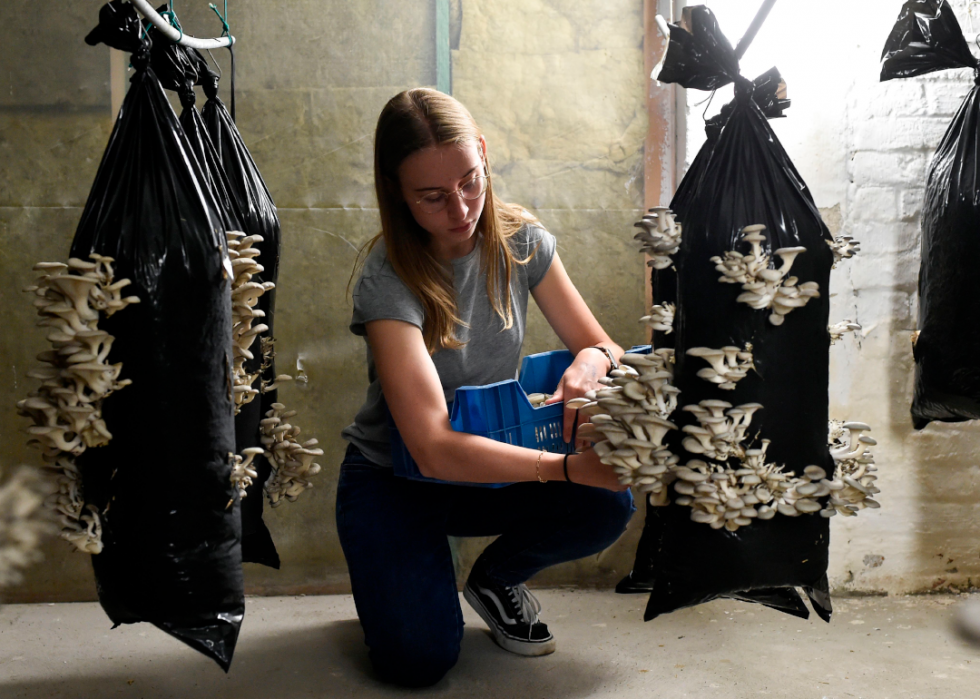
Mushrooms in Brussels
PermaFungi, a Brussels-based company that recycles coffee grounds to grow organic mushrooms, has roots in the city's downtown. The worker seen here is one of many laborers who assist in producing up to 2,000 pounds of mushrooms a month in the circular economy, which packs used coffee grounds with straw for spore nutrition, keeping waste out of landfills.
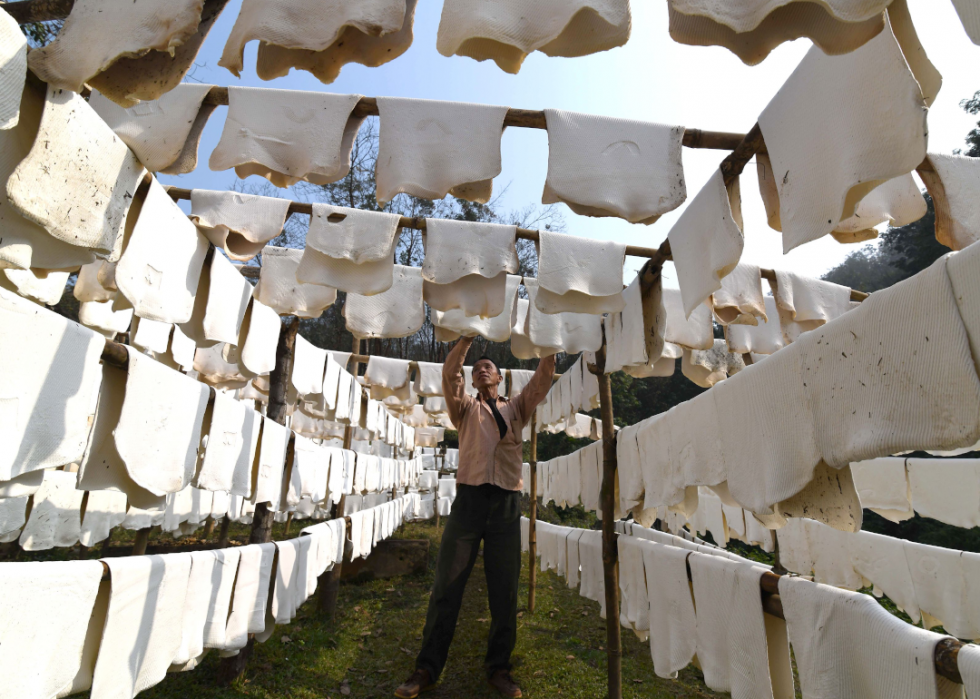
Drying rubber in India
Rubber trees in India grow fast and tall, thriving off daily rain and hot temperatures for an ultimate height of around 98 feet. Here, an Indian labour hangs sheets of rubber to dry at a rubber farm in Thakurkuchi village in Guwahati. Behind Thailand and Indonesia, India is the third-largest rubber-growing country globally, with plantations throughout manufacturing 9% of the stretchable fabric worldwide.
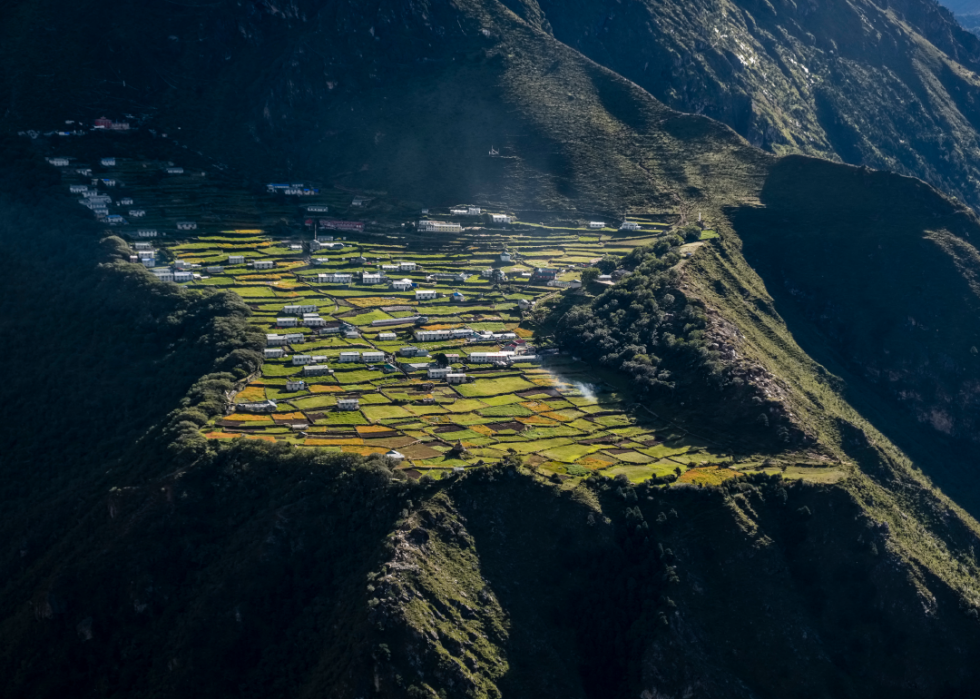
Village in Phortse, Nepal
Rather than producing an agricultural product, this Phortse village makes its money from mountaineering in some of the highest Nepalese peaks. Climbers from around the globe flock to the Mount Everest base for the thrill of their lives. Before Phortse constructed the Khumbu Climbing Center, mountaineers would lodge with the locals, who would provide food, shelter, and instruction.
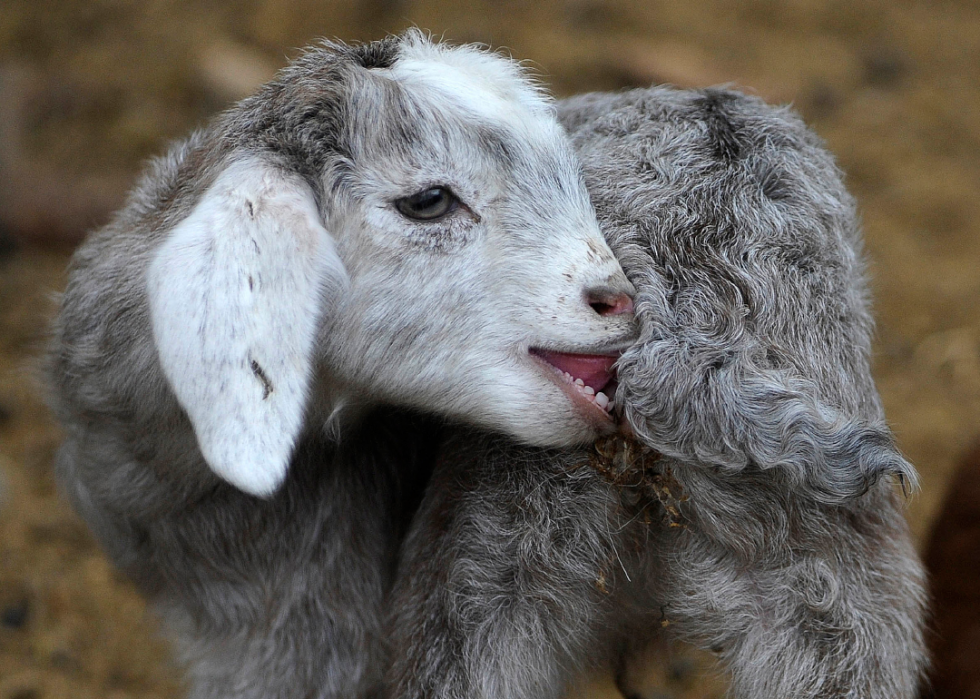
Goats in Mendoza, Argentina
The future health of baby kids and the economy on the outskirts of Malargue in the Mendoza province hangs on climate change. Here is a typical kid in the goat-breeding La Cortadera region, where global warming is detrimental to the herds, pushing flocks higher into the mountains to feed on nutritious grass.
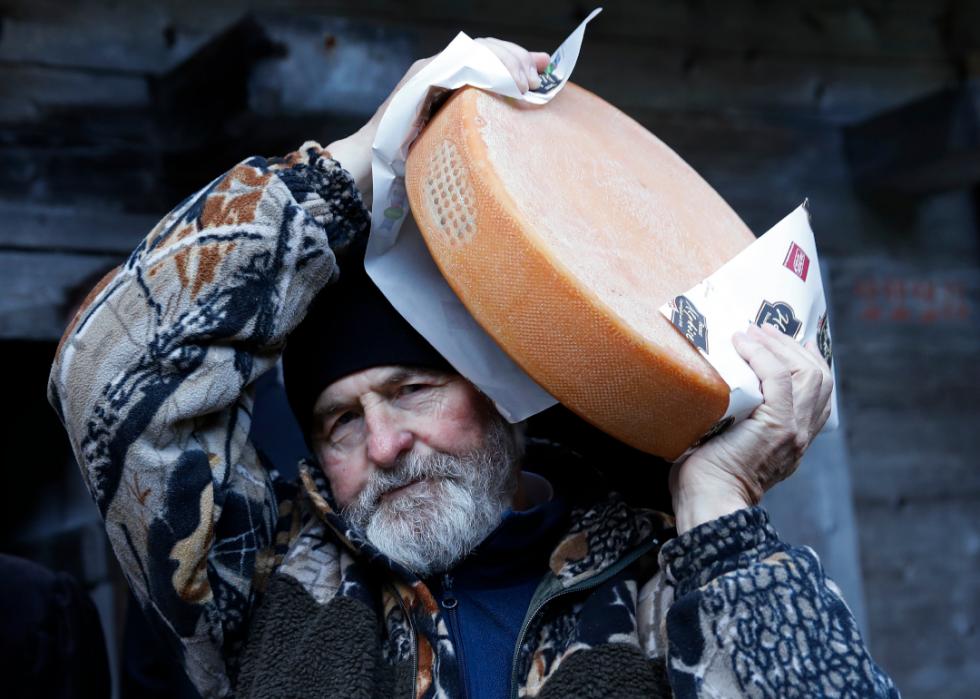
Chaesteilet in Justistal, Switzerland
September is a special time of year for Justistal farmers, who unite to welcome their cows coming down from the summer mountain pastures. The annual gathering is a time to share, with farmers and their families handing out weighted cheese based on their cows' production. The annual allocation of cheese is called "Chaesteilet," as seen here in the city of Bern.
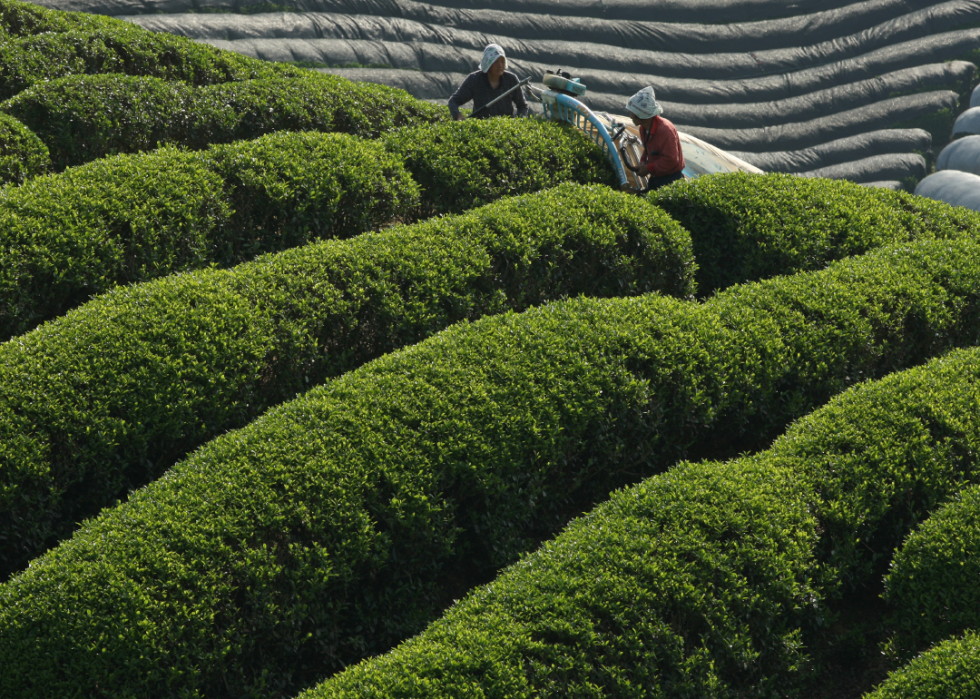
Tea harvest in Ujitawara, Japan
Originating in the middle of the Edo period, Ujitawara green tea soothes the soul and warms lungs worldwide. 80-year-old Japanese women Yaeko Asada (left) and Shigeharu Asada harvest fresh green tea leaves in the Ujitawara hills. Some brew-lovers trek to the region as tourists and enjoy the ancient area shrines and temples surrounding the tea plantations.
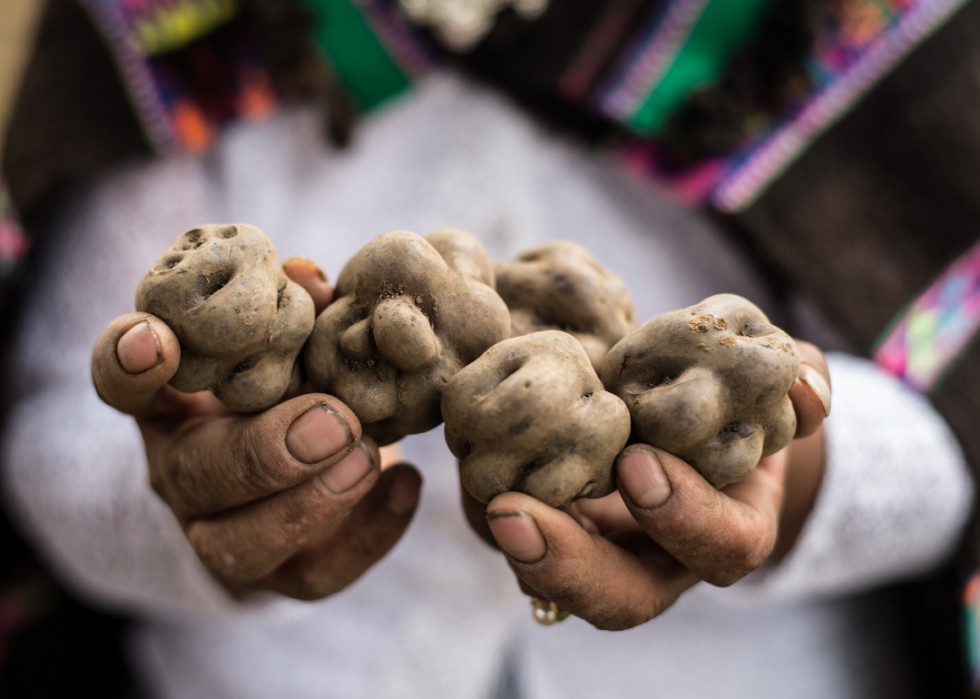
Potato farmer in Lima, Peru
As the largest spud producer in Peru, native potatoes feed millions. Rumor has it that the regional potatoes date back to the Incas, who settled in modern-day southern Peru and extreme northwestern Bolivia between 8,000-5,000 B.C. Meanwhile, today's Peruvian potatoes are cultivated in strains that are made to survive conditions from droughts to floods.
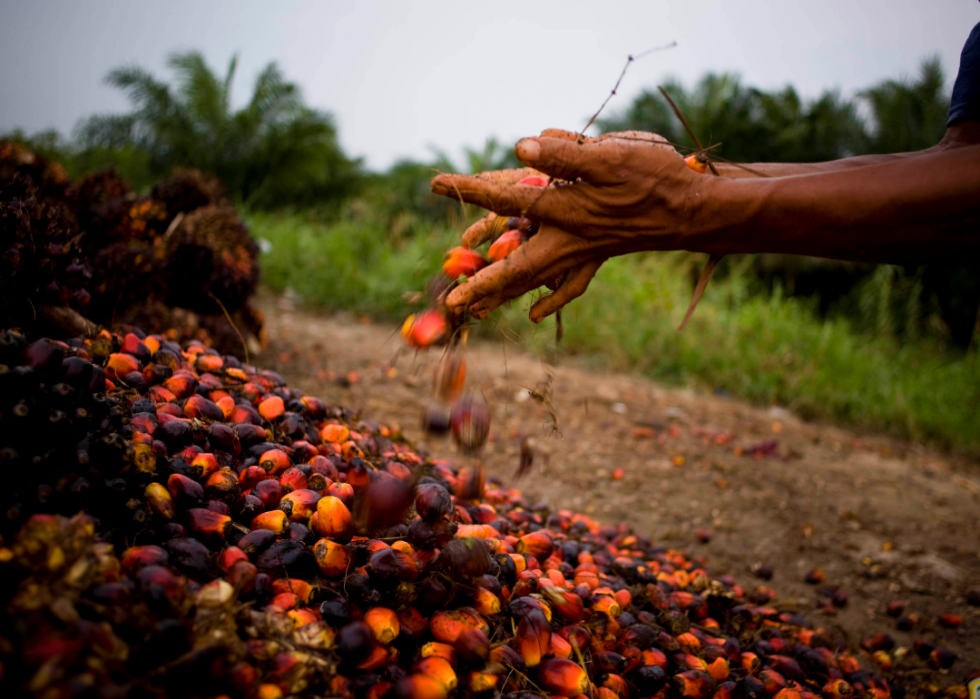
Palm oil plantation, Sumatra, Indonesia
Like so much agriculture globally, palm oil plantations may suffer extinction due to climate change. Here, a worker grabs seeds from palm oil plants harvested in Kuala Cenaku in Riau Province. Sumatra pulp, palm oil, and wood cultivation are under severe threat, despite Norway and Indonesia's collaborative efforts to reduce emissions from deforestation, forest degradation, and peatlands.
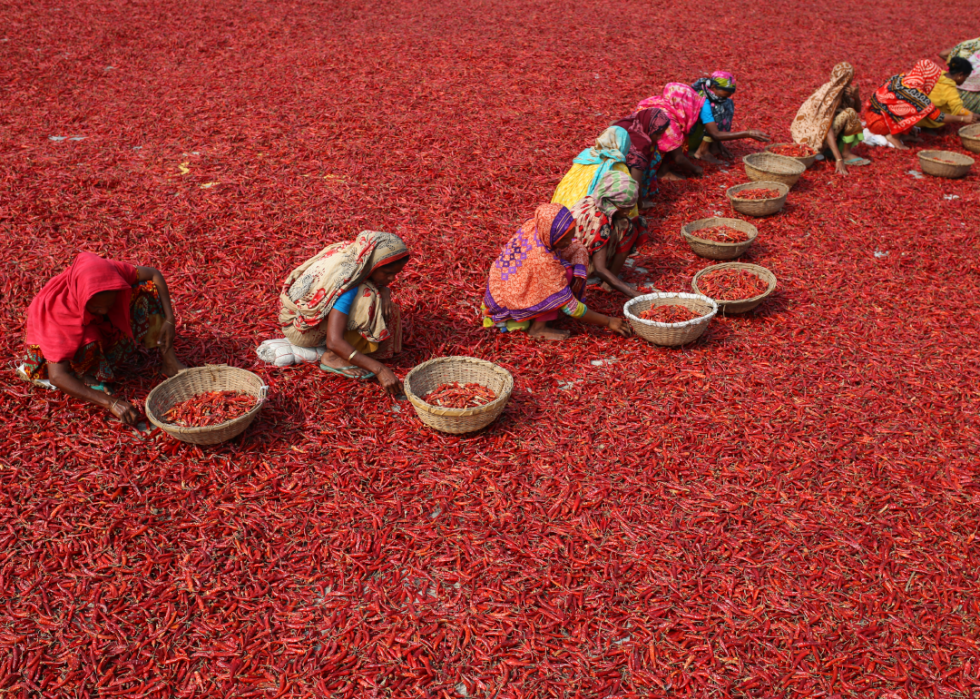
Red chilli peppers in northern Bangladesh
Thanks to frequent battles with Mother Nature, survival in Bangladesh's River Islands is rough, with residents receiving little medical attention, education, and power sources while harvesting huge blankets of red chili peppers, like these local laborers in a pepper yard in Sariakandi, Bogra. Crop yield loss due to an anthracnose pest problem also harms production.
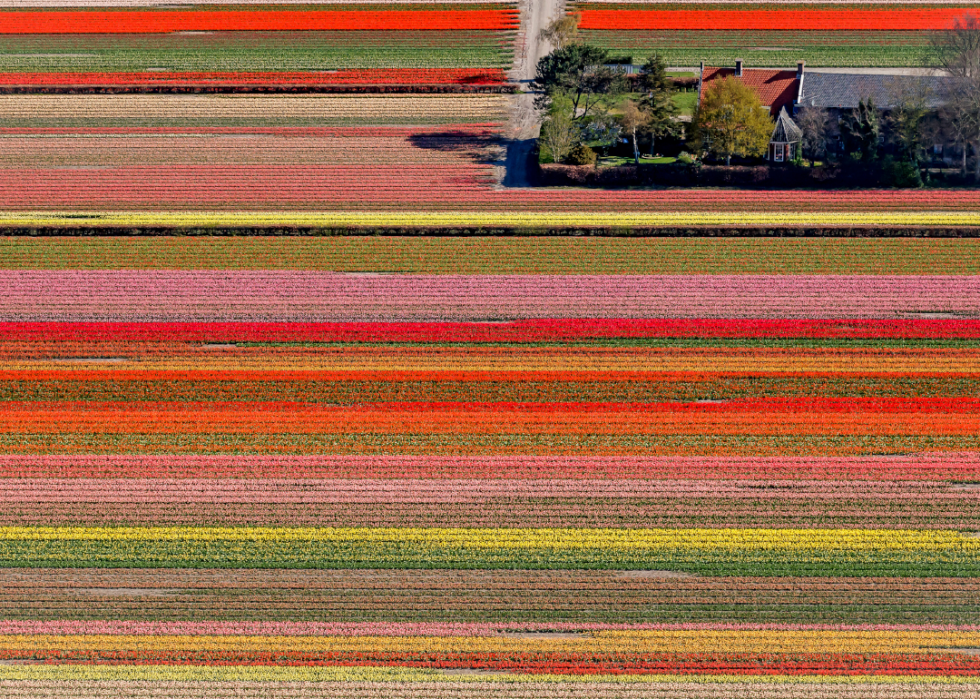
Tulip fields in Lisse, Netherlands
Southwest of Amsterdam, shades of yellow, purple, and red dress the Lisse fields by the blooming colors of tulip, hyacinth, and daffodil bulbs. The thousands of flowers captured here at the Keukenhof Gardens are billed as "The Garden of Europe." Open to visitors annually, Keukenhof Tulip Gardens displays up to 7 million bloomed bulbs annually, carefully planted the autumn before.

Mussel farm in Balikesir, Turkey
Swimming within a Balikesir mussel farm in the Marmara Sea, this diver experiences underwater agriculture at its finest. The Marmara Sea supplies up to 90% of all mussel production for Turkey, keeping communities healthy with substantial amounts of Omega-3 fatty acids, which improve brain function and heart health, and mood-enhancing vitamin B-12, which facilitates calmness and concentration.
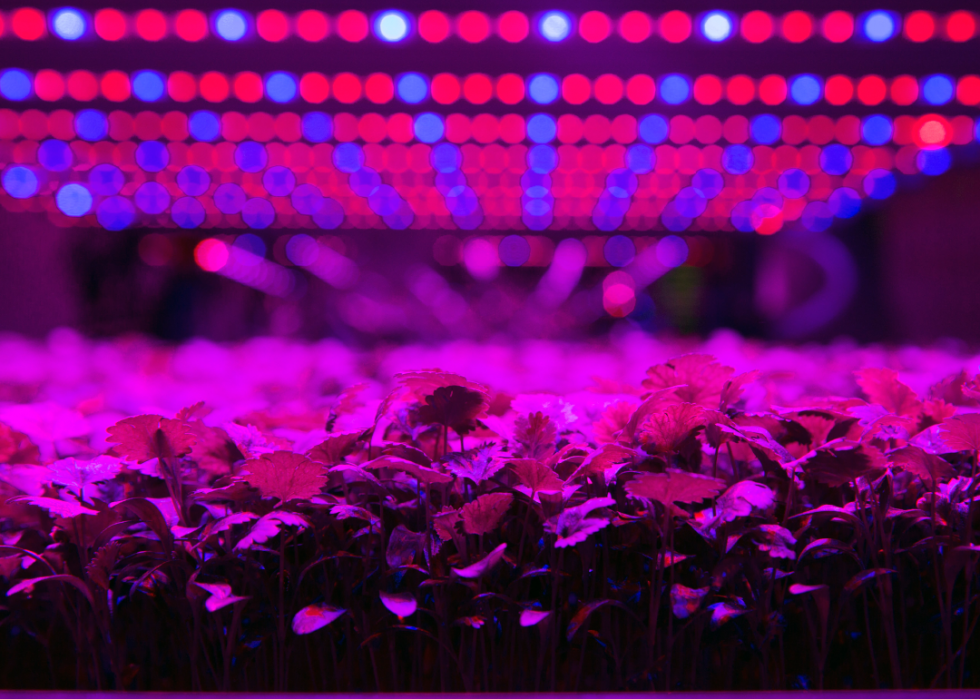
Vertical farm in Toronto, Canada
Crop production takes place 356 days a year at the Living Earth Farm, a certified-organic indoor vertical farm in Canada. The Toronto-based farm cultivates plants under LED lights and sustains the environment with its packing methods, shipping all agriculture products in clamshells made from recycled water bottles, and uses renewable electricity and a "predictive" production schedule to avoid waste.
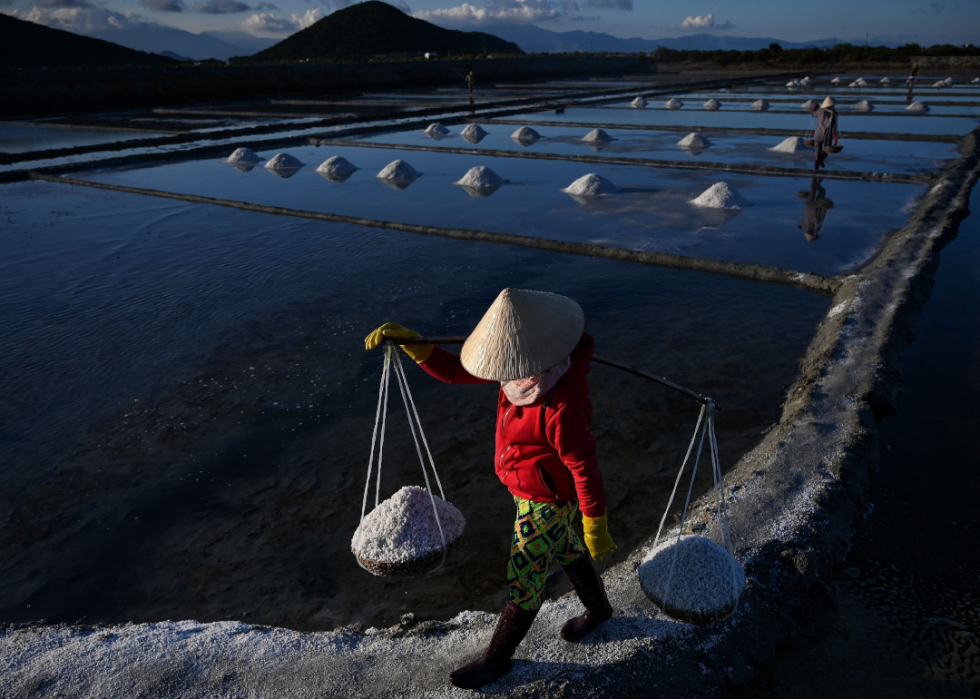
Salt fields in Hon Khoi, Vietnam
The shallow seawater pools of Doc Let Beach, which are filled with salt mounds, draw tourists from all over to observe the annual harvests between January and June. The generational economy thrives due to East Sea salt coming into Hon Khoi fields, which evaporates for 10 days before harvesters collect it in wicker baskets.
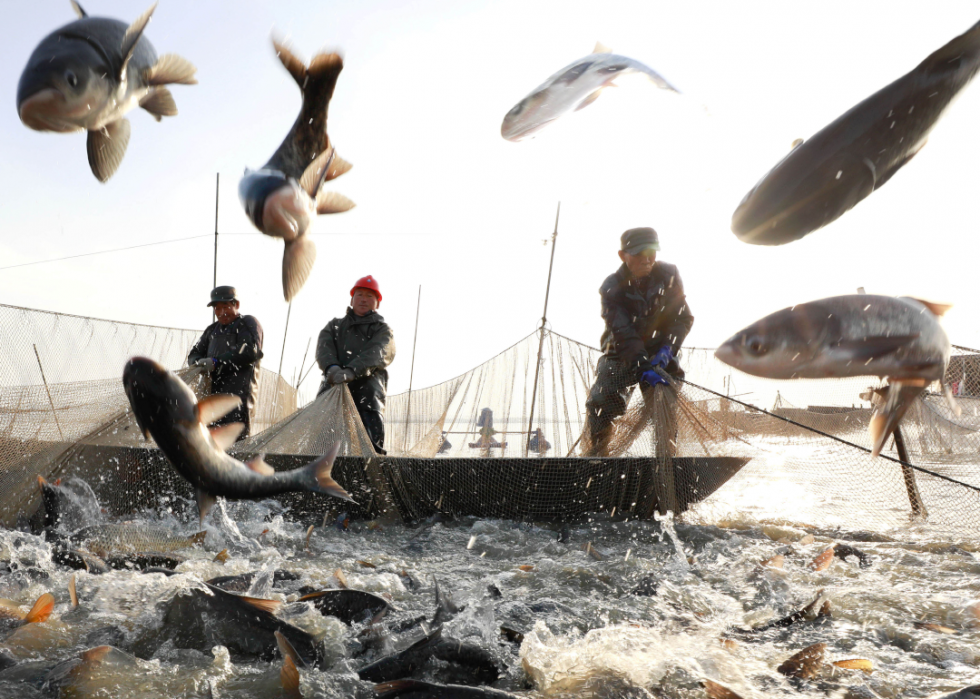
Aquatic farmers in Huai'an, China
Fish farming in Huai'an is key to survival in the Jiangsu Province of China. Here, farmers net fish at Maoer Lake in Xuyi County, working hard for a big catch to ship off to Beijing, Shanghai, Zhejiang, and other regional markets. The World Trade Organization (WTO) reported that more than 100 local farmers have increased their income thanks to "a new [business] model combining the participation of leading companies, low-income farmers, and industrial base."
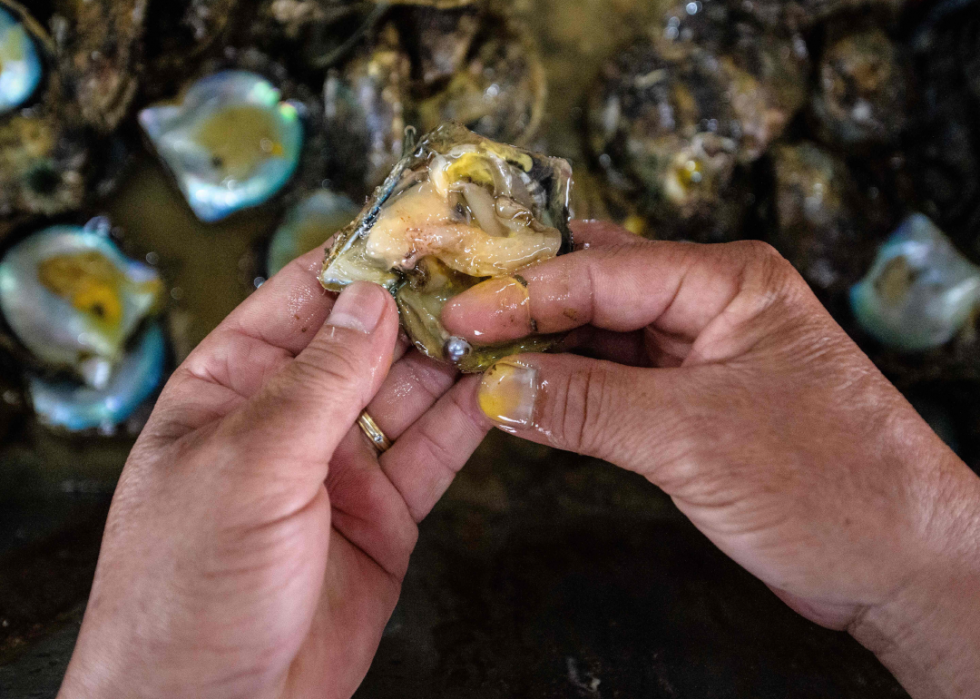
Pearl farming in Sai Kun, Hong Kong
Former investment banker-turned-scientist Yan Wa-tat opens an Akoya pearl oyster on a fishing raft in the rural Sai Kung region of Hong Kong, attempting to revive the age-old farming technique. Harvesting the oysters, which contain radio-frequency identification chips, entails scraping barnacles off up to 2,000 mollusks found on Hong Kong's eastern coastline. Saltwater oysters are nucleated with a mother-of-pearl shell-bead coated with mantle tissue from another mollusk to form the pearl.
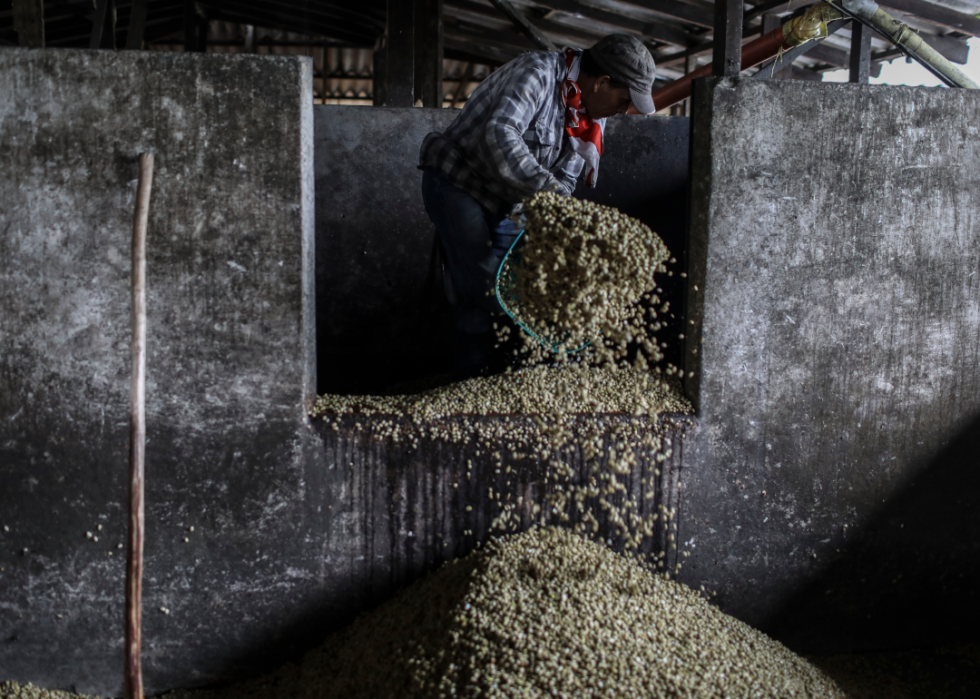
Coffee harvest in Ciudad Bolivar, Colombia
Colombia grows the third-most savory java globally behind Ethiopia and Kenya. Some of the finest coffee comes from Ciudad Bolivar, where up to 25,000 coffee pickers gather from all over Colombia between October to December to harvest millions of beans. Here, a laborer loads coffee beans at a processing plant in the Antioquia Department municipality.

Aquaculture in Nyanza, Kenya
Here, a local Kenyan laborer dries small fingerlings in the sun by Lake Victoria's shores. The rapidly growing aquaculture is a saving grace for Kenyan locals, with fish farming creating enough work for jobless residents. Freshwater fish production has assisted the financially impoverished country as far back as the 1980s.
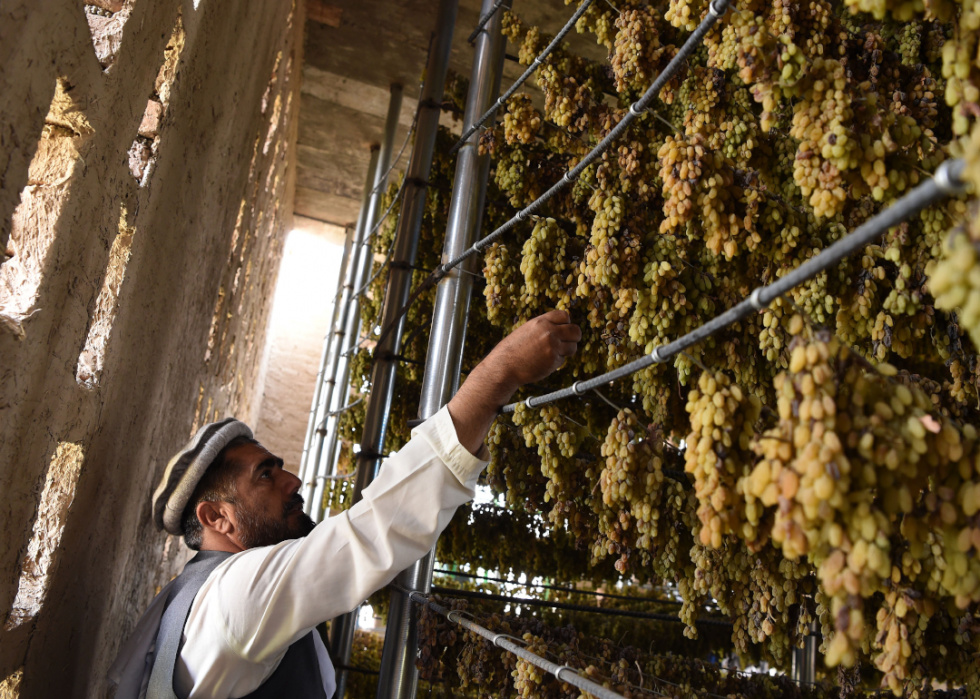
Drying grapes in Kabul, Afghanistan
Hanging on sticks roughly threaded across a mud-brick shed, an Afghan farmer inspects bunches of grapes in the Dhi Sabz district of Kabul. Though generations have thrived on the grape economy, it is hoped that a revamp of raisin houses (called "keshmesh khanas") will revitalize the dried grape industry, which once provided up to 10% of the worldwide market.
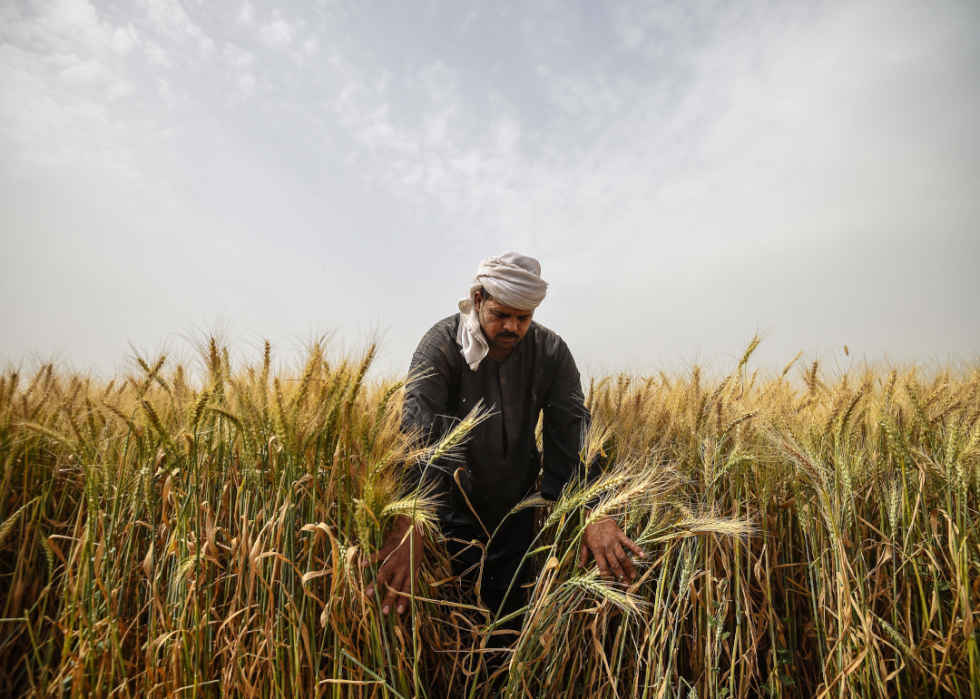
Wheat harvest in Menoufia, Egypt
The Saqiyat al-Manqadi village in the northern Nile Delta is home to a bountiful wheat harvest seen here. Like other agriculture-rich regions globally suffering from environmental changes, the province of Menoufia in Egypt, where the Nile Delta runs, also sees soil issues and pollution. However, water shortage is the most detrimental factor since Egypt "falls well below the internationally accepted definition of water poverty," according to the Financial Times.
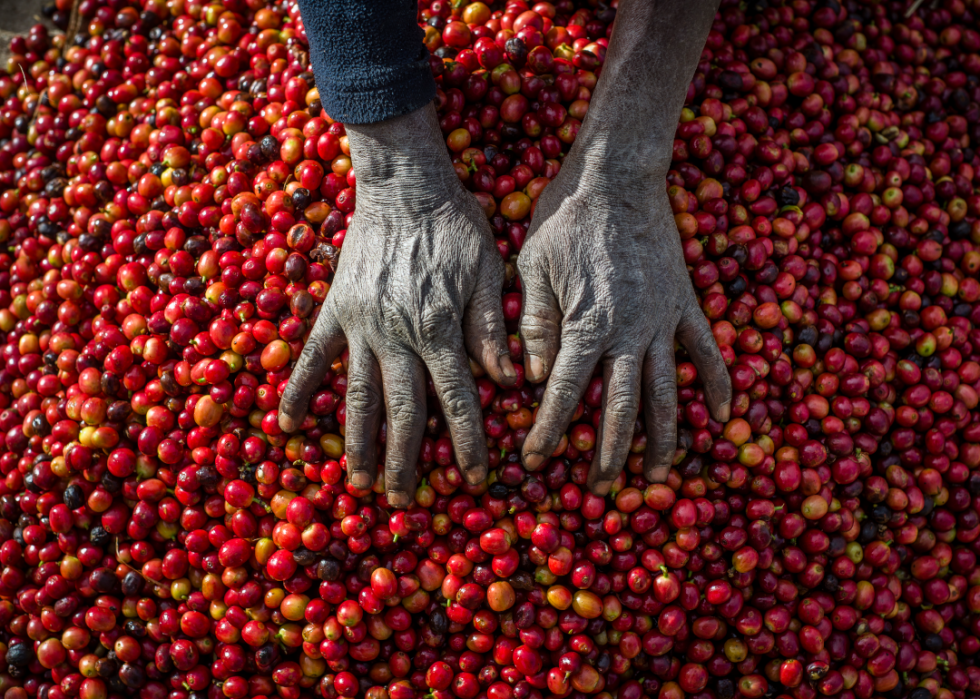
Coffee harvest in Mubuyu Farm, Zambia
Pickers remove unripe or overripe coffee beans and foreign debris from their daily harvest to prepare them for weighing at the Mubuyu Farm in Zambia. It is the largest private-sector producer in the region and was founded by Willem Lublinkhof, a coffee connoisseur, who migrated to Zambia more than four decades ago to develop the Dutch company.
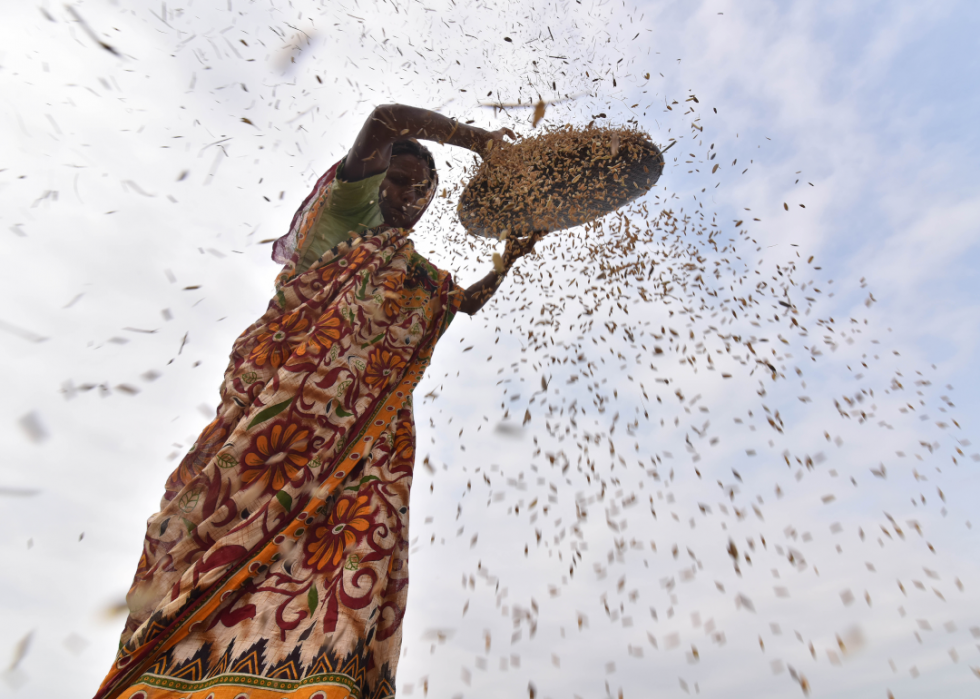
Rice farming in Assam, India
The rice paddy fields in Burha Mayang Village breed a bountiful harvest that locals labor over strenuously. The Indian farmer pictured here dries harvested rice in the Morigaon district in the state of Assam. Grown organically, up to 40% of Assam rice is raised in fragile conditions.
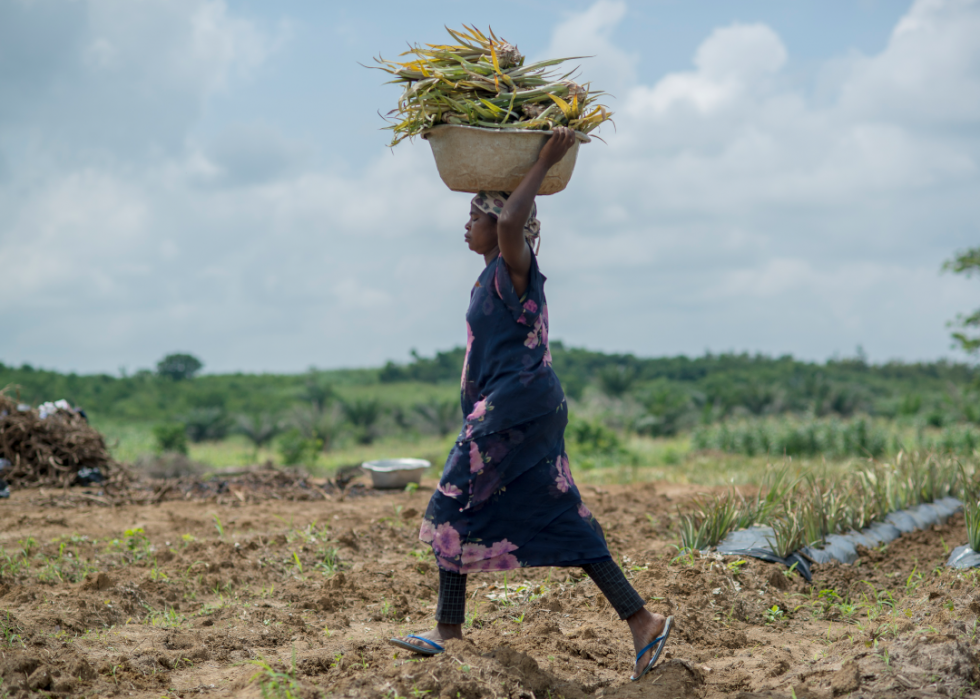
Pineapple farm in Ekumfi, Ghana
Entrepreneur Daniel Kwarteng founded "One District One Factory," a government program that aims to administer a facility in every Ghanaian district. His plan in action is seen here by a farmer carrying a plethora of pineapples ready for planting at the Greenfields Pineapple farm in Ekumfi. The program has employed thousands of Ghanaian locals who work more than 650 acres.
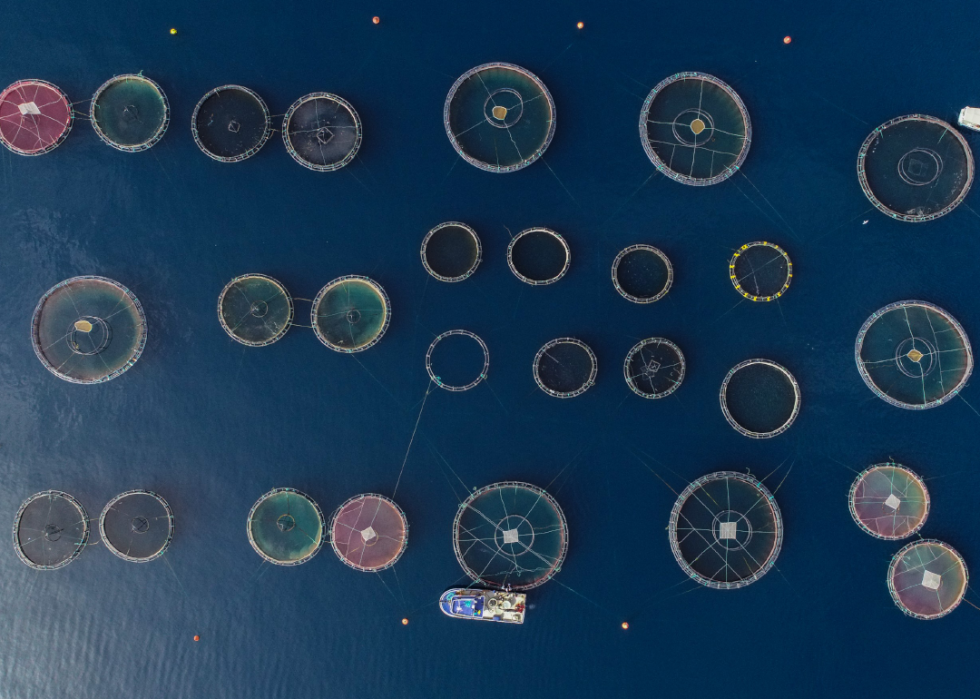
Fish farming in Turkey's Izmir
Crossbreeding sea bream and dentex creates the "Egeli" fish. This aerial view of the Turkish aquatic plantation shows the circular nets that farm the new fish species in Izmir's Karaburun district. The novel seafood went on sale in 2019.
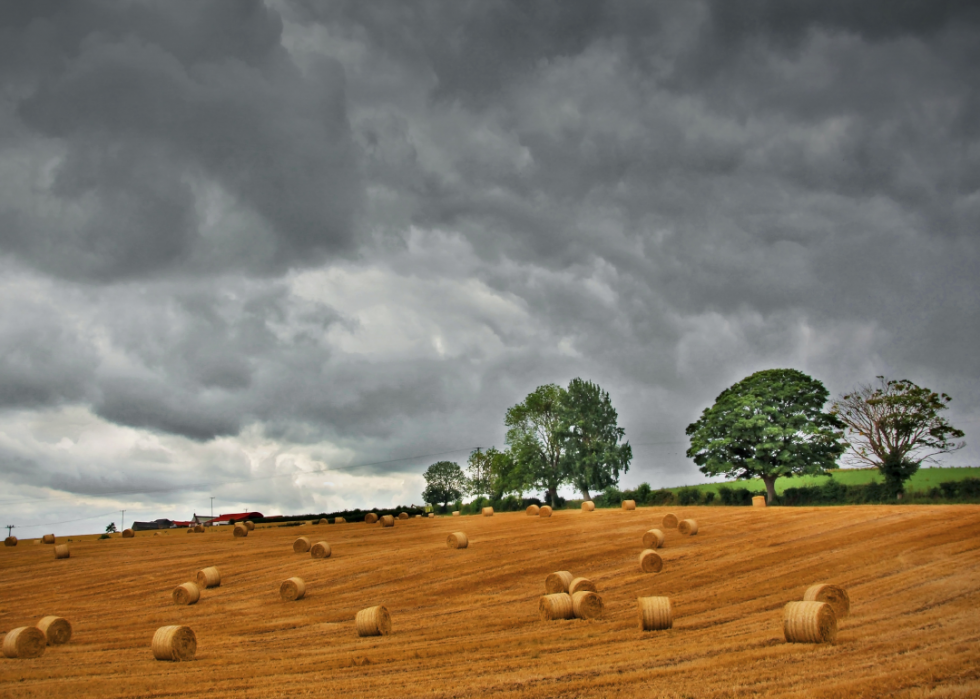
Barley field in Northern Ireland
Barley straw bales sit in a field under ominous skies in Loughgall in Northern Ireland. Wet winter conditions, followed by springtime droughts, greatly affected County Armagh's 2020 barley output, with the combined barley and wheat output falling by 400,000 tons.
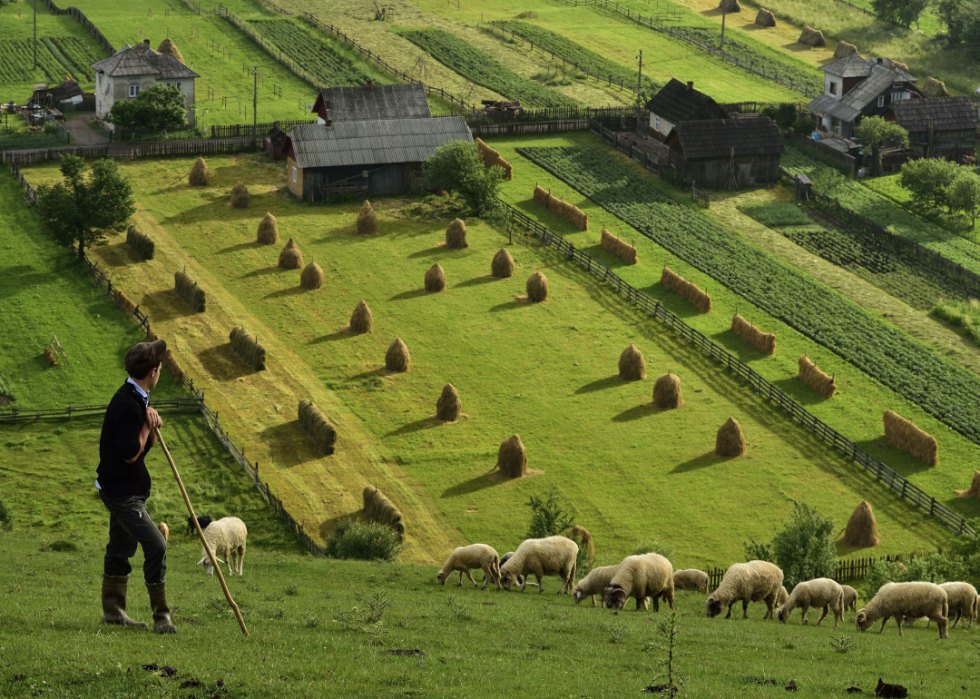
Scenic countryside in Bukovina, Romania
A shepherd tends to his grazing sheep in the countryside around the Moldovita monastery in Bukovina, Romania. The country is Europe's largest exporter of live sheep, though animal rights groups have protested the treatment of the animals. The Moldovita monastery was built in 1532, with the colorful exterior paintings added in 1537.
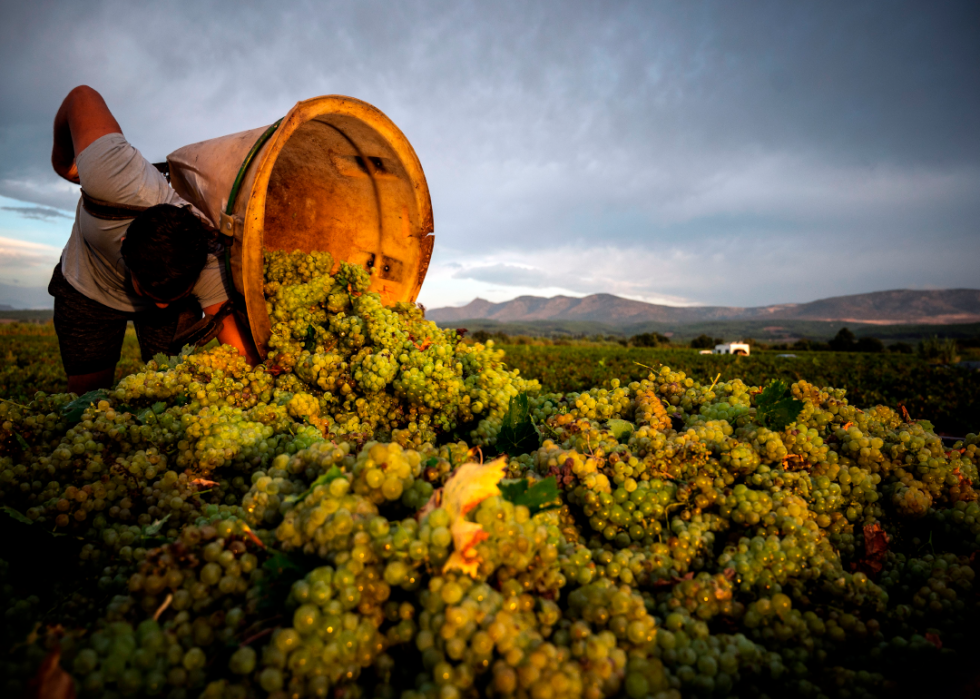
Wine harvest in southern France
A picker unloads grapes into a trailer at a vineyard in Espira-De-l'Agly, southern France, during the wine harvest. Bathed in 300 days of sunshine, the area was cited by the Ministry of Ecological Transition as one of the signs of global warming, with the annual harvest taking place up to a month earlier than just 40 years ago.
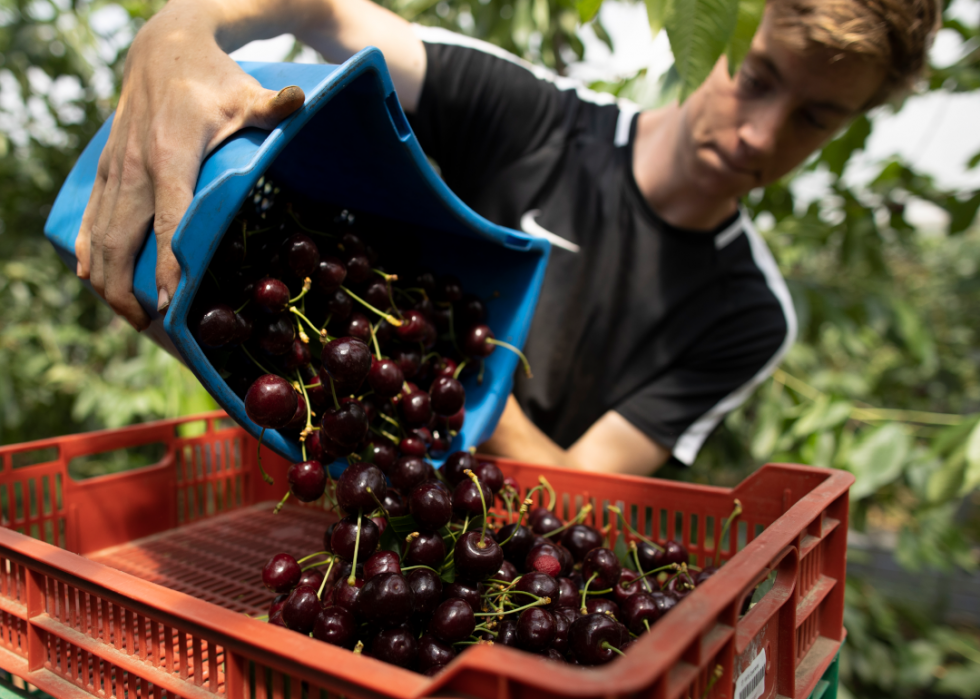
Cherries in Canterbury, England
Seasonal worker Callum Pearman collects cherries on a tray during New House Farm's annual harvest. The United Kingdom's cherry industry reached unprecedented output levels in 2019, with roughly 14 million pounds of cherries picked during the short growing season.
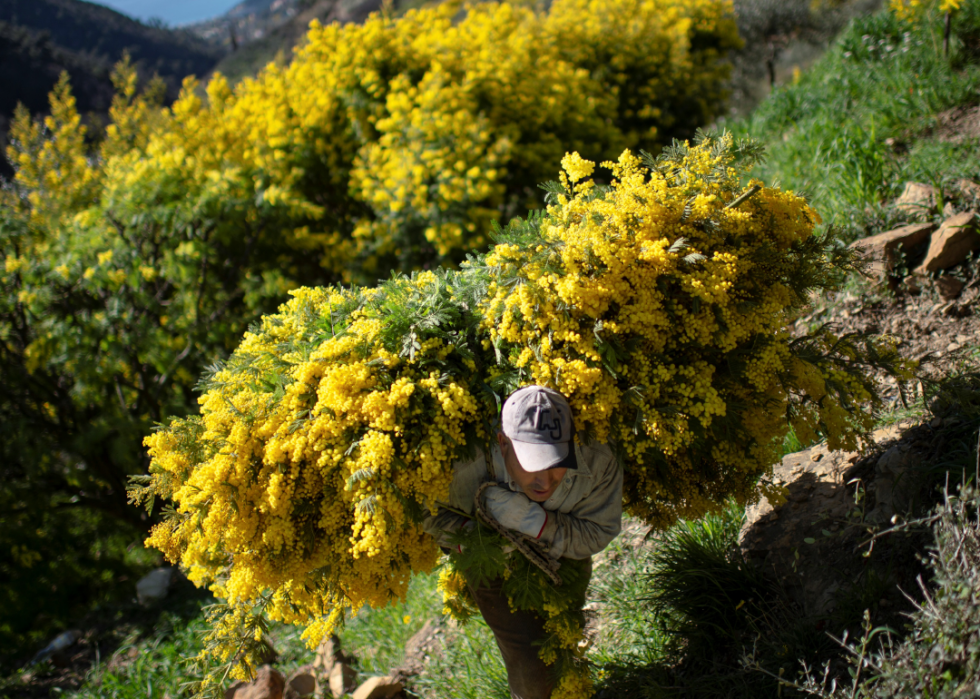
Harvesting mimosa in Northwest Italy
A man carries harvested mimosa branches near the village of Seborga in northwestern Italy. Though mimosa trees are an excellent source for pollinators and produce vibrant colors, their seeds are toxic if eaten by pets and humans.
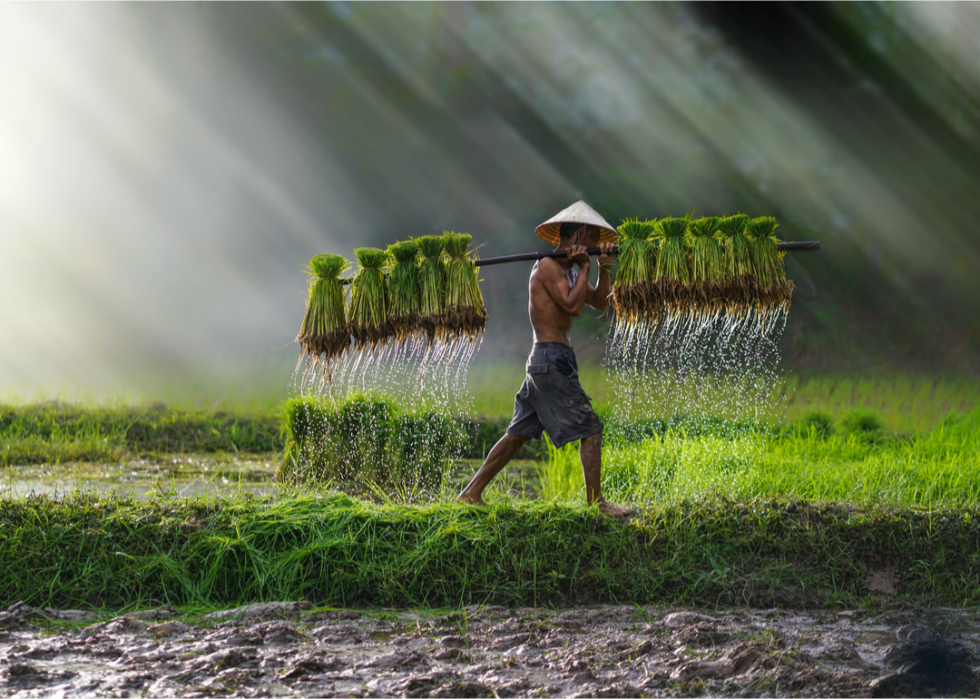
Rice farming in Vietnam
A Vietnamese farmer carries seedlings for planting in one of the country's many rice paddies. While production of rice was down in 2020 due to drought, stockpiling due to the coronavirus and export reductions among other top producers have left the demand for Vietnamese rice high.
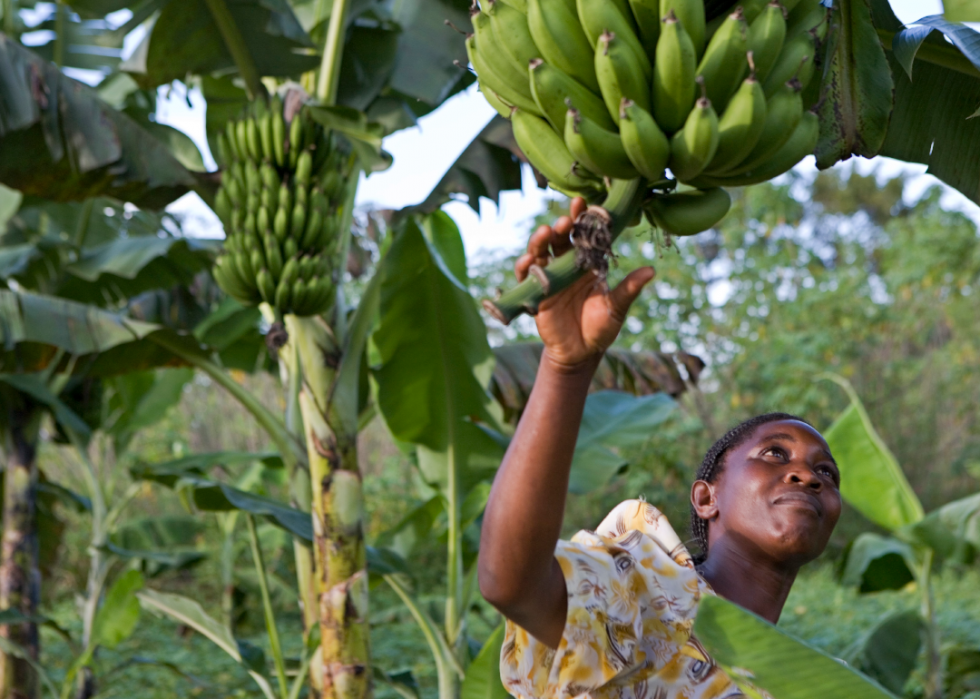
Plantains in Nakasongola, Uganda
Mrs. Beatrice Sebyala examines the plantain crop at her farm, a training ground for other farmers through the Kulika Uganda program, which teaches organic farming practices. Uganda is the world's second-largest grower of plantains ("matooke") behind India, though it only began exporting in 2012.
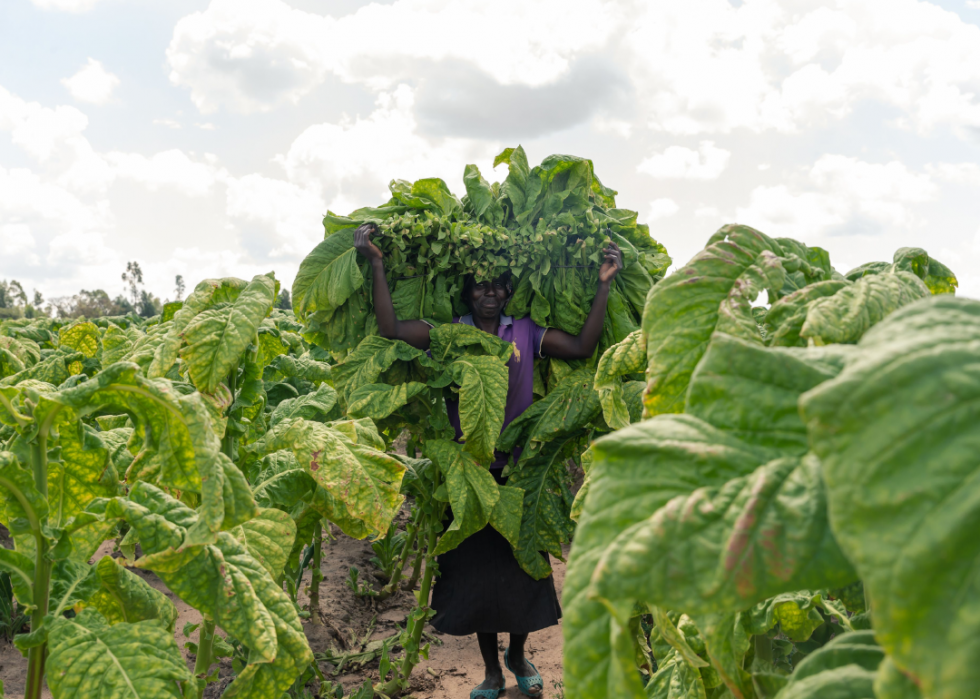
Tobacco farming in Zimbabwe
A woman carries tobacco leaves after hand-reaping at Tilisa farm in Bromley, Zimbabwe, at the start of tobacco-selling season. Tobacco is Zimbabwe's second-largest earning export after gold, accounting for nearly $500 million of the African country's economy.
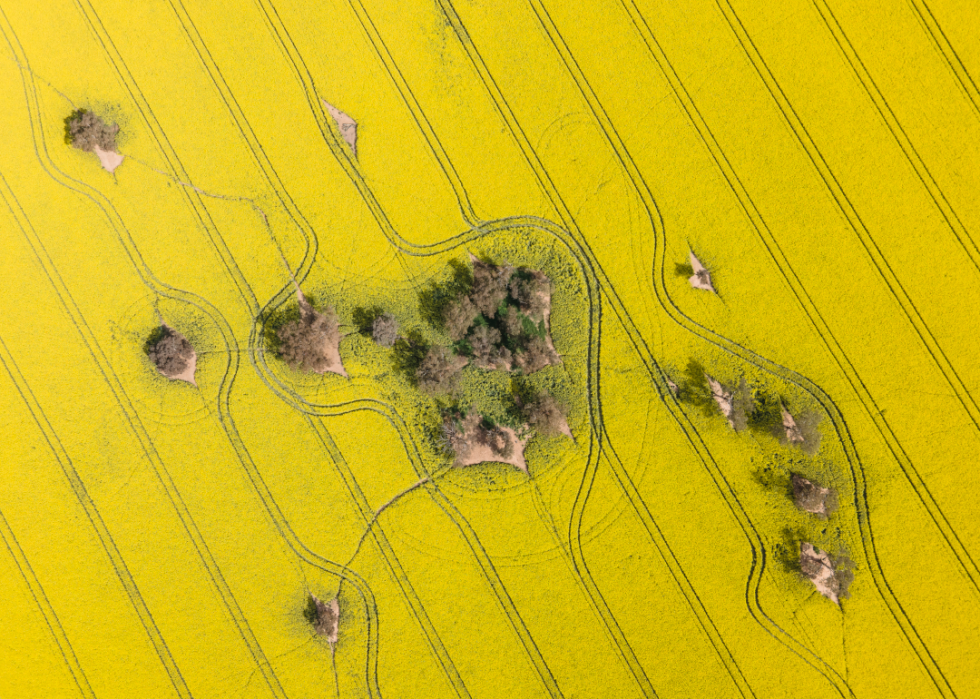
Canola fields in Harden, Australia
The rains of the Australian winter did wonders for the bright yellow canola fields seen here. The resulting bumper harvest was predicted to be the second-largest winter crop in a decade after prolonged droughts decimated output.
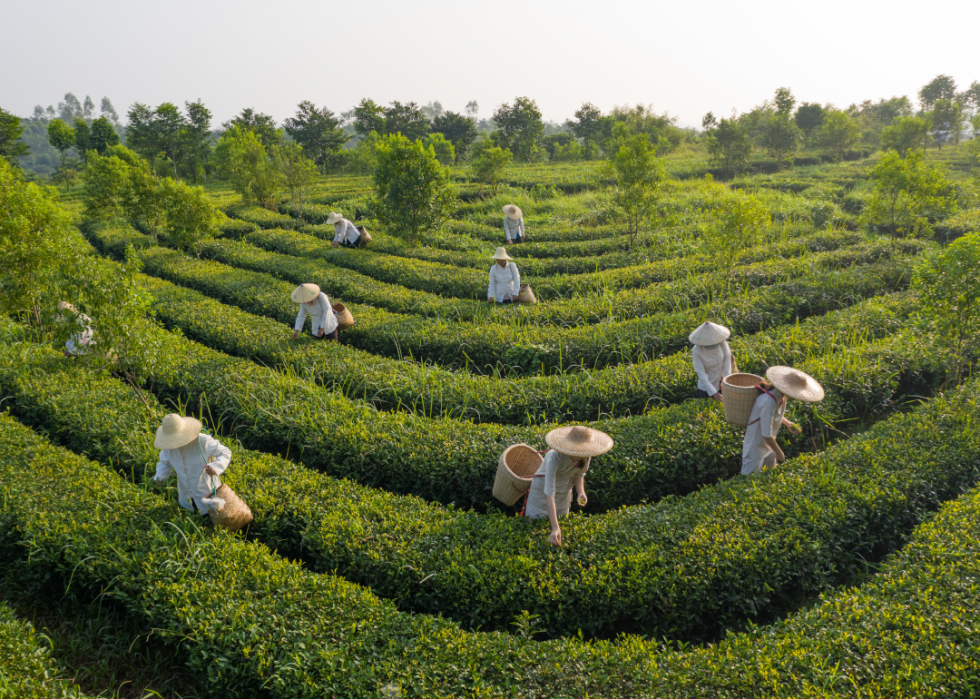
Tea garden in Guangdong, China
Farmers pick tea leaves from a garden in Zhanjiang, Guangdong. Although not one of China's biggest tea producers, the province is known for its Phoenix Oolong and Ying De Black varieties. Most of the tea leaving China, however, passes through Guangdong, which is one of the export hubs of the country.
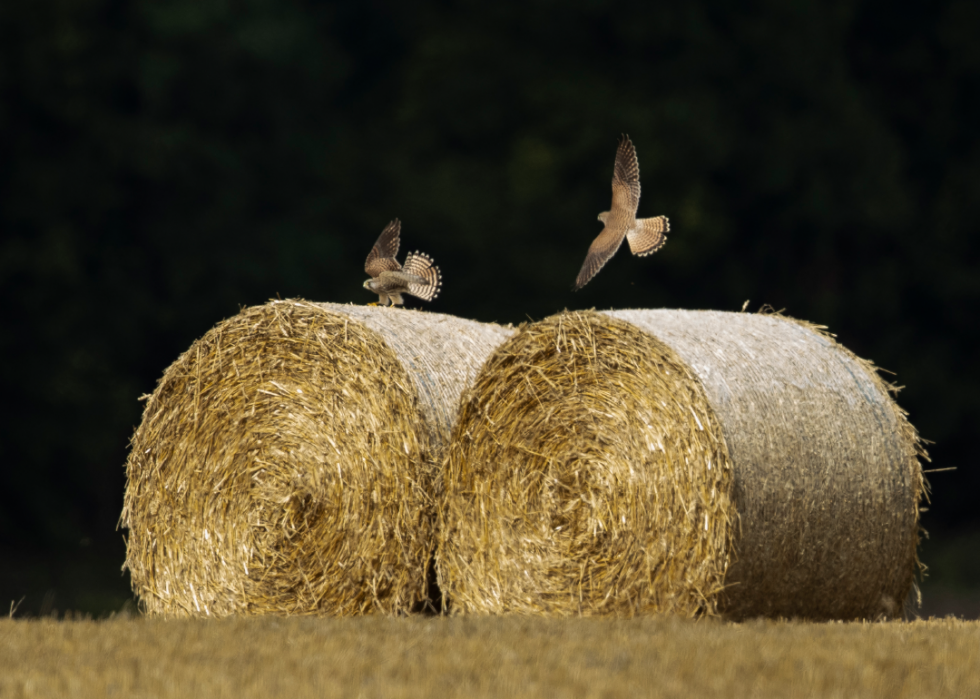
Hay bales in Cudham, England
Two kestrels frolic on top of hay bales in a field in Cudham, England. More than 75% of the land in England is used for agricultural purposes, with hay aiding in the production of the country's most abundant crops, including wheat, barley, and oats.
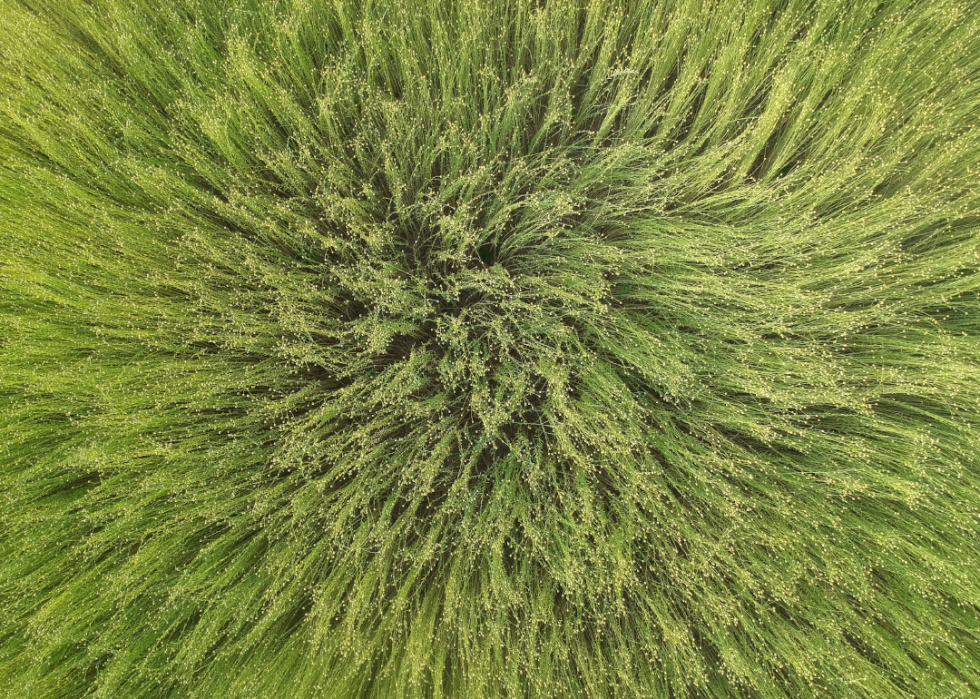
Flax field in Saint-Philbert-sur-Risle, France
The commune of Saint-Philbert-sur-Risle in Normandy, France, hosts the annual Flax and Needle Festival. Europe produces 80% of the world's flax, with France leading the way in the production of the natural-growing, long-lasting fiber used in linens, and whose seeds are used for flaxseed and linseed oil.
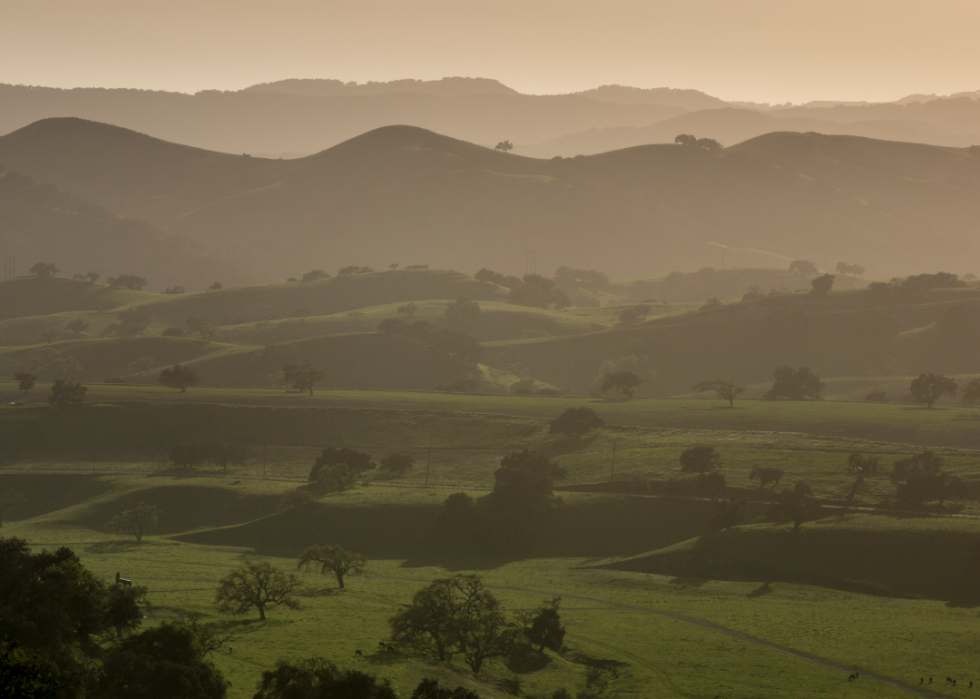
Santa Barbara wine country, California
The Mediterranean climate, along with its close proximity to Los Angeles and Southern California, draws millions of tourists annually to the wine country of Los Alamos. The rolling hills and valleys produce beautiful views, while the fare prompted Food & Wine Magazine to call Los Alamos the "Best Little Wine Country Town in California."
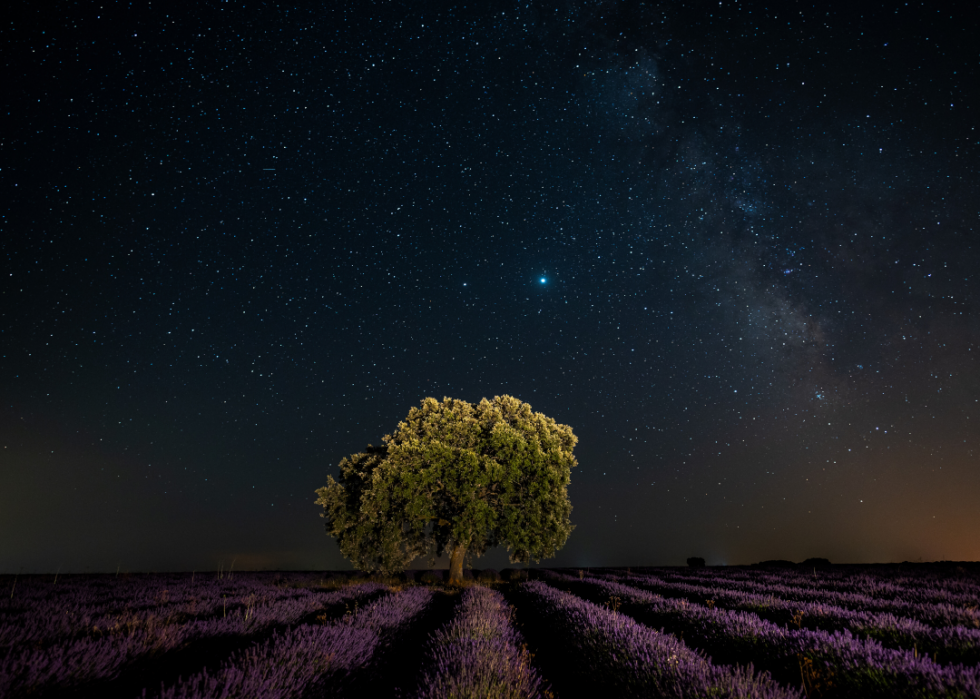
Lavender field in Brihuega, Spain
The tiny village of Brihuega, in the Guadalajara province of Spain, produces 10% of the world's lavender. In this photo, Jupiter, Saturn, and the Milky Way light up the lavender fields over one of the largest plantations in Spain. The annual Lavender Festival draws more than 20,000 people to the tiny village of just over 2,000 inhabitants.



